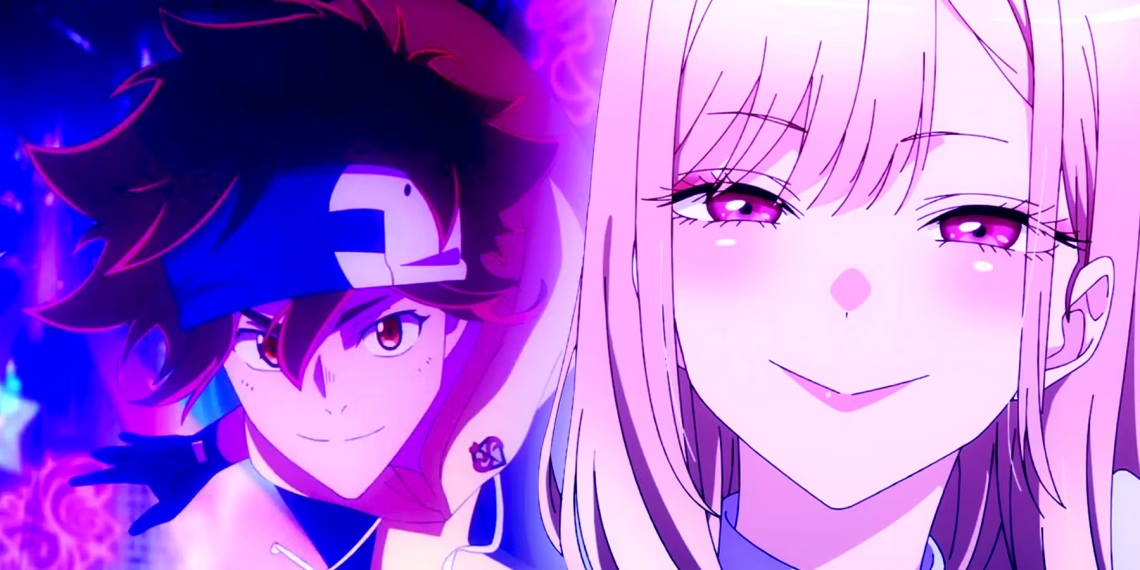Wrapping up an evening with an anime binge is a treasured habit for many. However, with so many series and engaging story arcs, choosing the right one can feel like a challenge. The sheer variety of options makes selecting a single series a difficult yet exciting decision.
Fortunately, this vast selection ensures there’s something for everyone. Whether looking for heart-racing action, deep character development, or hilarious comedic moments, anime provides a storytelling experience that caters to every taste. From epic adventures to lighthearted fun, the possibilities are endless.
For those drawn to intricate storytelling and high-stakes battles, Overlord delivers an engrossing experience. Set within a virtual reality game world, it follows an ordinary salaryman who transforms into a powerful skeletal overlord. As he maneuvers through political intrigue and faces formidable foes, the series keeps viewers on the edge of their seats.
Meanwhile, for those in the mood for humor and eccentricity, Call of the Night offers a refreshing change. Centering on a human boy who stumbles into a world of nocturnal vampires, this series blends supernatural elements with comedic slice-of-life moments, making it a fun-filled watch.
With anime offering a vast trove of entertainment, every mood finds its perfect match. Whether go into thrilling quests or enjoying quirky escapades, the next unforgettable anime arc is always within reach.
10. Don’t Toy With Me, Miss Nagatoro’s Date Arc
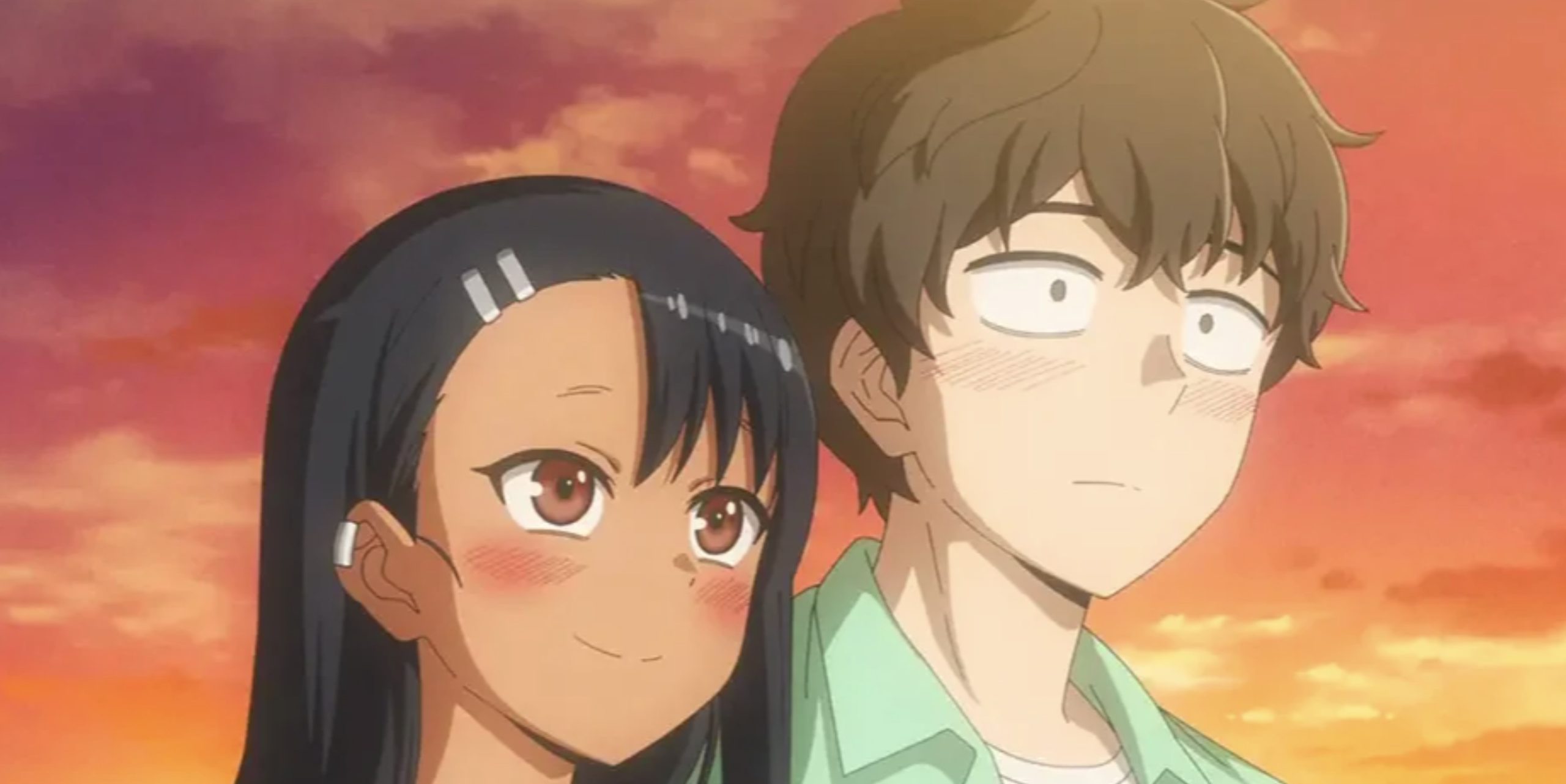
“Don’t Toy With Me, Miss Nagatoro” made a lasting impression from the moment its mischievous protagonist, Hayase Nagatoro, flashed her trademark toothy grin across TV screens.
Despite initial concerns about its portrayal of bullying, the series has emerged as a resounding success, amazing audiences with its engaging storyline and dynamic character dynamics.
Building upon the momentum of its first season, the second season goes deeper into the evolving relationship between Nagatoro and Naoto “Senpai” Hachiouji, culminating in a heartwarming final arc: the date arc.
In this highly anticipated arc, viewers are treated to a satisfying end that proceeds organically, showcasing the gradual development of Senpai’s feelings for Nagatoro.
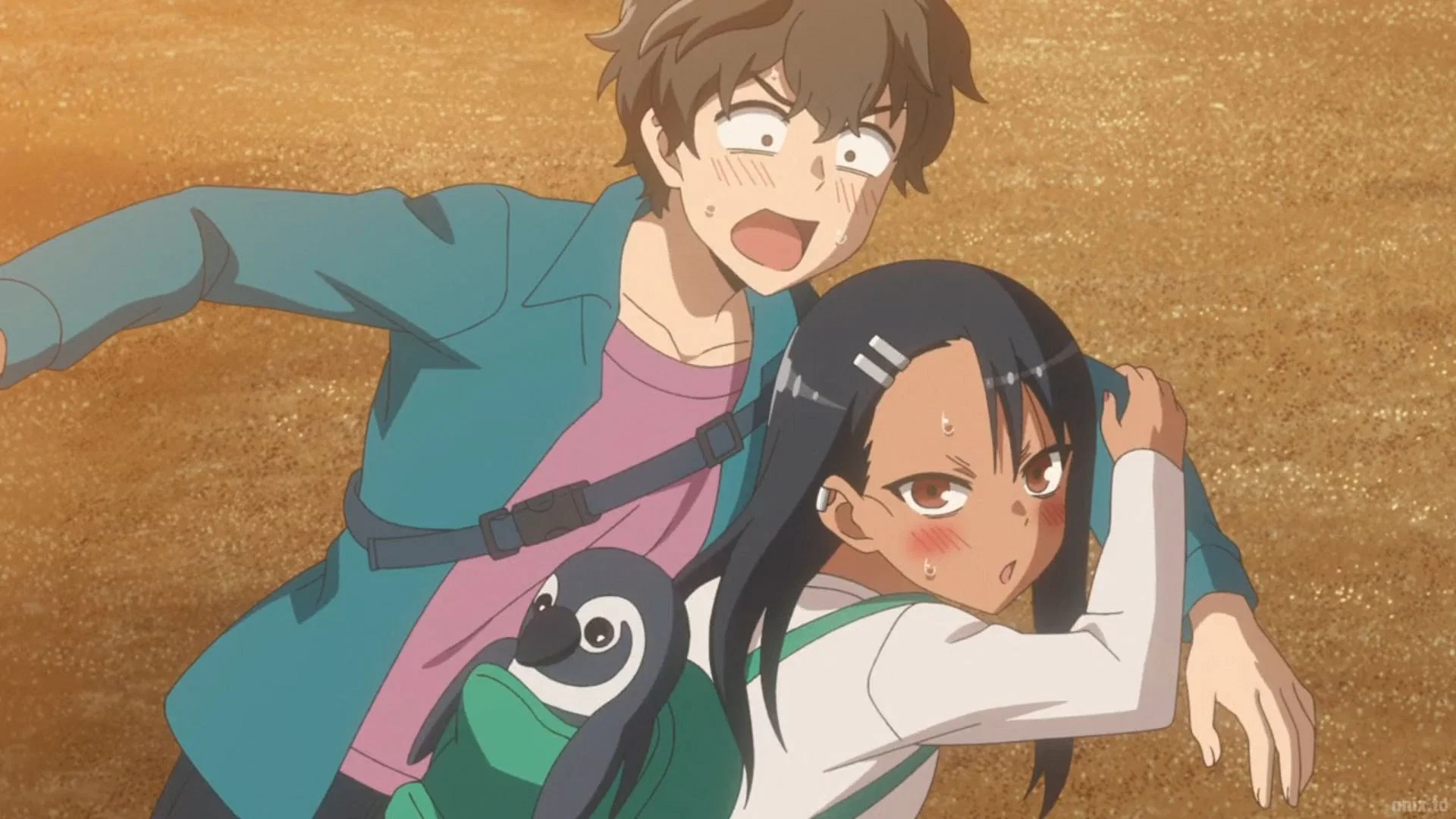 As Senpai musters the courage to invite Nagatoro on a date to the aquarium, the stage is set for a series of delightful escapades and humorous hijinks. From playful banter to tender moments of connection, the arc heals the complexities of young love with charm and sincerity.
As Senpai musters the courage to invite Nagatoro on a date to the aquarium, the stage is set for a series of delightful escapades and humorous hijinks. From playful banter to tender moments of connection, the arc heals the complexities of young love with charm and sincerity.
Throughout the date arc, viewers will find themselves laughing alongside the characters while also rooting for their blossoming romance. As the young couple hails the ups and downs of their burgeoning relationship, each moment is imbued with a sense of warmth and authenticity that resonates with audiences.
With its heartwarming end and undeniable charm, the date arc of “Don’t Toy With Me, Miss Nagatoro” is tailor-made for binge-watching.
Once started, it’s difficult to resist the allure of this amazing arc, leaving viewers feeling both entertained and uplifted by its fun-filled antics and touching moments. So, if you’re in need of a feel-good anime experience that’s sure to leave you with a smile, look no further than the irresistible charm of the date arc in “Don’t Toy With Me, Miss Nagatoro.”
 Don’t Toy With Me, Miss Nagatoro is a romantic comedy anime that first aired in 2021. Adapted from Nanashi’s manga, the series blends playful teasing, character development, and lighthearted romance. It follows the dynamic between a timid high schooler and an energetic underclassman who loves to push his buttons.
Don’t Toy With Me, Miss Nagatoro is a romantic comedy anime that first aired in 2021. Adapted from Nanashi’s manga, the series blends playful teasing, character development, and lighthearted romance. It follows the dynamic between a timid high schooler and an energetic underclassman who loves to push his buttons.
Naoto Hachiouji, a quiet and introverted second-year student, enjoys spending his free time drawing in the art club. His peaceful routine is disrupted when he encounters Hayase Nagatoro, a lively first-year girl who quickly takes an interest in him. Amused by his shy and awkward nature, Nagatoro starts teasing him relentlessly, giving him embarrassing nicknames and playfully mocking his reactions.

Despite her constant teasing, Nagatoro’s behavior is not purely mean-spirited. As the series progresses, it becomes clear that her actions stem from a genuine interest in Naoto. She enjoys pushing him out of his comfort zone but also encourages him to become more confident. Her playful jabs gradually turn into moments of support, revealing a deeper emotional connection.
Naoto, initially overwhelmed by Nagatoro’s antics, slowly learns to stand up for himself. While he remains reserved, he starts challenging her teasing and even surprises her with unexpected comebacks. Their interactions develop into a unique bond that balances humor, tension, and romance. Through their playful exchanges, they both experience personal growth.
Nagatoro is a complex character who hides her own vulnerability behind her energetic and mischievous persona. While she enjoys teasing Naoto, she also reacts strongly when others try to bully him. This duality highlights her protective nature, showing that her teasing comes from affection rather than cruelty. Her development adds depth to her personality.

The anime’s comedic moments revolve around Nagatoro’s pranks, exaggerated expressions, and Naoto’s awkward reactions. The humor is fast-paced, often using visual gags and over-the-top reactions to enhance the comedic tension. At the same time, the series incorporates heartfelt moments that deepen their relationship beyond simple jokes.
Visually, the anime is bright and expressive, with fluid animation that brings out the characters’ emotions. Nagatoro’s smirks, pouts, and playful grins are exaggerated, making her teasing feel more dynamic. Naoto’s nervous expressions and gradual confidence shift are also well-portrayed, adding to the storytelling.

The voice acting plays a significant role in bringing the characters to life. Sumire Uesaka’s portrayal of Nagatoro perfectly captures her playful and teasing tone, shifting between energetic mockery and softer, caring moments. Daiki Yamashita’s performance as Naoto effectively conveys his nervousness, frustration, and eventual growth in confidence.
The soundtrack, composed by Gin, complements the anime’s lighthearted tone. The opening theme, “EASY LOVE” by Sumire Uesaka, reflects Nagatoro’s playful personality, while the ending theme, “Colorful Canvas,” carries a more sentimental feeling. The background music enhances both comedic and tender moments without overshadowing the dialogue.
Beyond the comedy, the anime examines themes of self-confidence and emotional growth. Naoto’s journey from a timid loner to someone who can hold his own against Nagatoro’s teasing is a central part of the story. His newfound courage extends beyond their relationship, influencing his interactions with others and his passion for art.
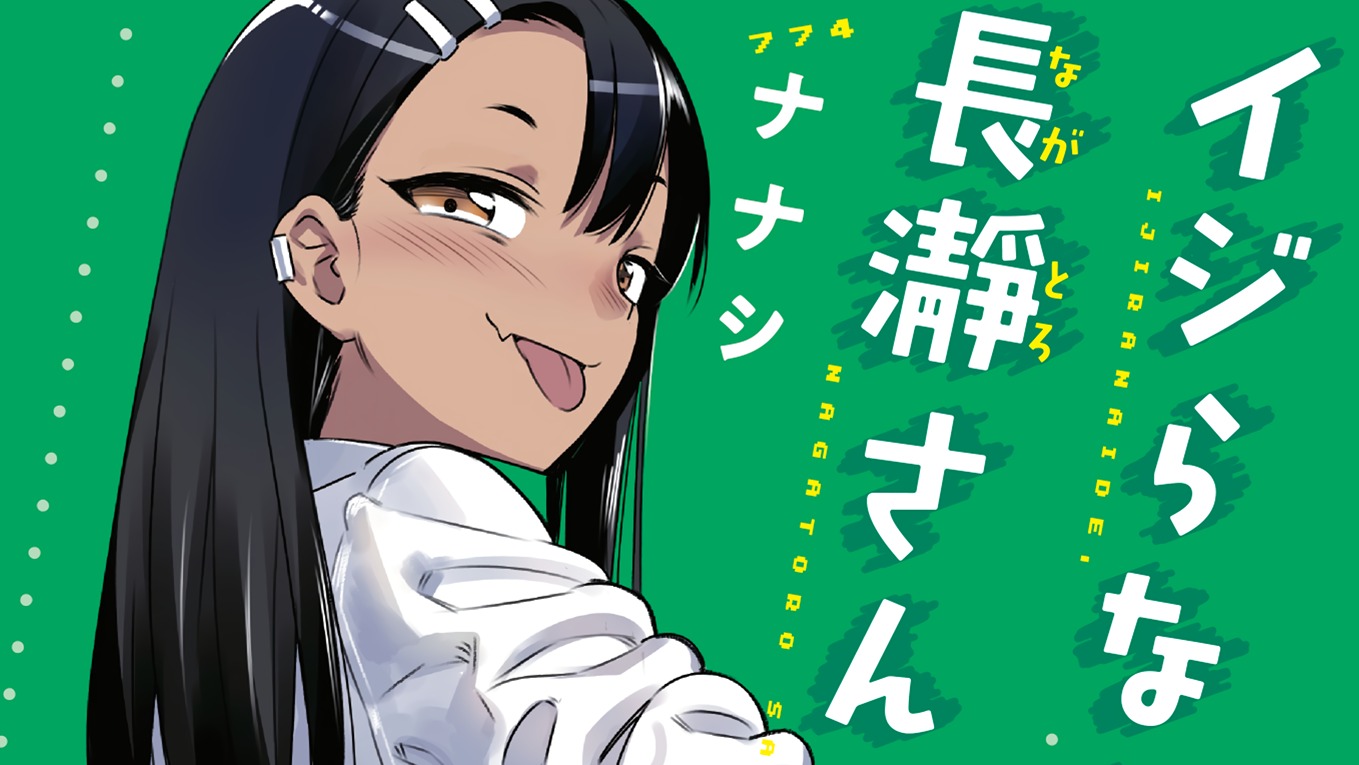
Nagatoro’s development is equally compelling. Although she starts as a relentless teaser, she gradually reveals a more vulnerable side. Her moments of embarrassment and jealousy show that she cares deeply about Naoto, even if she struggles to express her feelings directly. This emotional complexity makes their relationship feel genuine.
The supporting cast, including Nagatoro’s energetic friends, adds more layers to the story. Gamo-chan and Yoshi often tease Naoto as well but ultimately encourage his relationship with Nagatoro. The president of the art club provides another interesting contrast, representing a more composed and mature presence in Naoto’s life.
One of the anime’s strengths is its ability to balance comedy with romance. The playful teasing never feels too harsh, and the series avoids making Nagatoro’s actions seem cruel. Instead, their relationship develops naturally, with moments of sincerity breaking through the humor. This balance keeps the story engaging and heartwarming.
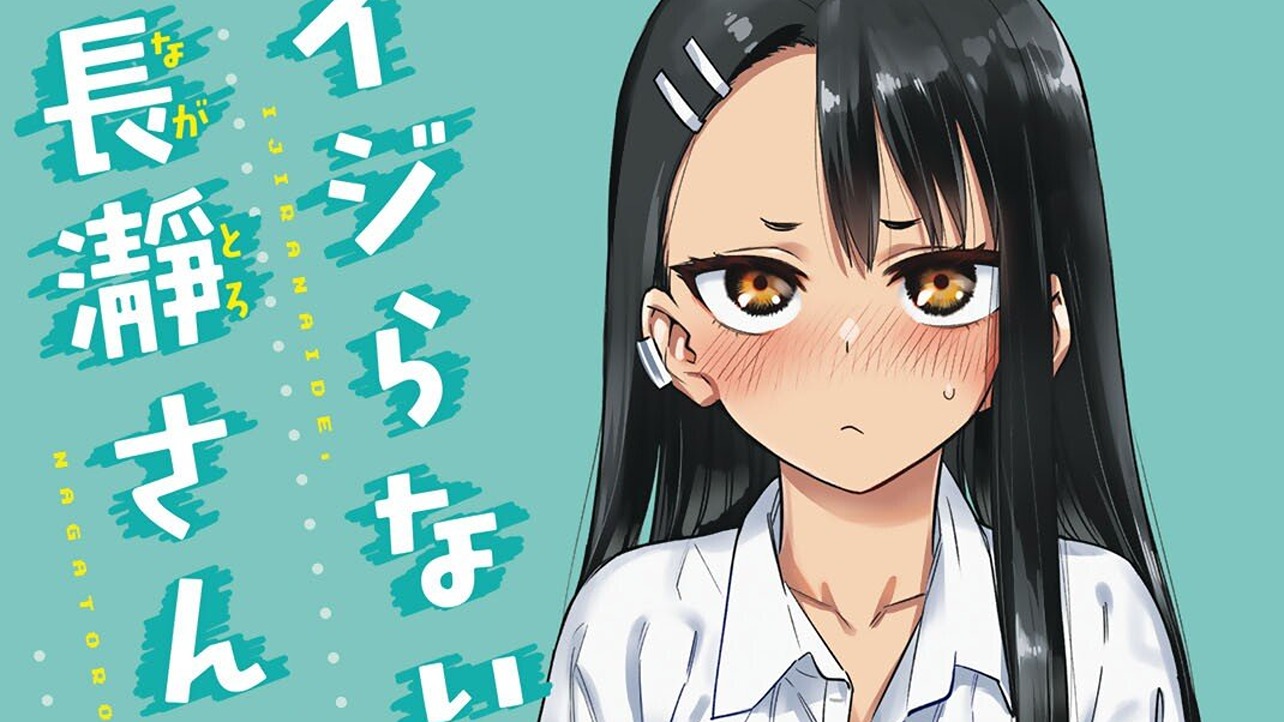
The setting remains simple but effective, focusing primarily on school life and the art club. These familiar locations provide a backdrop for their interactions, emphasizing the small yet meaningful moments that shape their connection. Whether they are working on a drawing together or playfully challenging each other, their time spent in these settings strengthens their bond.
Don’t Toy With Me, Miss Nagatoro stands out as a romantic comedy that embraces humor while allowing its characters to grow. It takes the concept of teasing and turns it into a foundation for a deeper relationship, proving that affection can be expressed in unexpected ways. Their dynamic, filled with laughter and hidden emotions, makes for an entertaining watch.
With its engaging humor, expressive animation, and evolving romance, the anime offers more than just playful antics. As Naoto and Nagatoro continue to challenge and support each other, their bond remains the heart of the story. Their journey, filled with teasing, growth, and heartfelt moments, makes the anime an enjoyable and memorable experience.
9. Overlord’s Bloody Valkyrie Arc
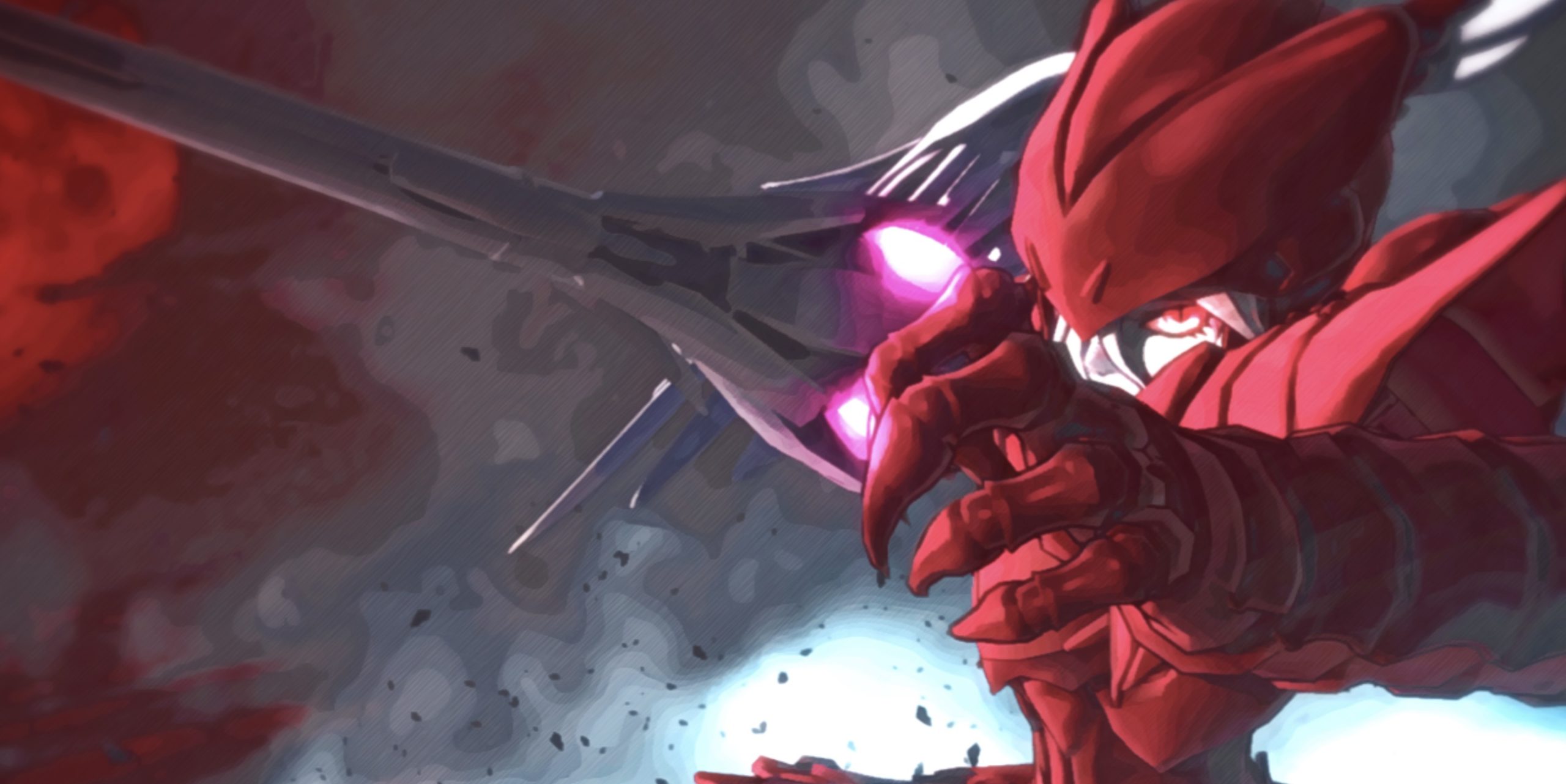
“Overlord” offers a unique take on the isekai genre, with its protagonist Momonga finding himself trapped in a virtual reality game that inexplicably becomes a reality, bringing his NPC companions to life.
Renaming himself Ainz Ooal Gown after his guild, he sets out from The Great Tomb of Nazarick in search of his fellow guildmates, hoping they too have been transported to this new world.
Despite his vast knowledge of the game and the formidable power of the Guardians of Nazarick, Ainz repeatedly finds himself caught off guard in the unfamiliar territory.
The Bloody Valkyrie arc epitomizes these unexpected challenges, thrusting Ainz into a forced confrontation with one of his most powerful Guardians, the vampiress Shalltear Bloodfallen. In what becomes one of the most thrilling battles of the series, viewers are treated to a clash of titans as these two formidable adversaries square off.
The arc’s gripping narrative will keep audiences on the edge of their seats, eagerly anticipating the outcome of this epic showdown between might and magic.
Throughout the arc, viewers will find themselves amazed by the intricacies of the battle, as Ainz and Shalltear unleash their formidable powers in a struggle for supremacy. With each twist and turn, the tension mounts, leaving audiences guessing until the very end.

Will Ainz emerge victorious, or will Shalltear prove to be an insurmountable foe? The answer remains uncertain until the final moments, ensuring a riveting viewing experience that will leave fans clamoring for more.
For those craving exhilarating action and suspenseful storytelling, the Bloody Valkyrie arc of “Overlord” delivers in spades.
With its high-stakes battles and unexpected twists, this arc is a must-watch for anyone seeking an adrenaline-pumping adventure in a fantastical world filled with intrigue and danger.
Overlord is a dark fantasy anime that brings a unique twist to the isekai genre. Adapted from Kugane Maruyama’s light novel series, the anime first aired in 2015 and quickly gained recognition for its intricate world-building, morally ambiguous protagonist, and strategic warfare. Unlike most isekai series where the protagonist is a hero, Overlord presents a lead character who leans toward the role of an all-powerful antihero.
The story follows Momonga, an avid player of the virtual reality game Yggdrasil. When the game’s servers are about to shut down, he decides to stay logged in until the end. However, instead of being disconnected, he finds himself trapped within the game as his character, the skeletal overlord Ainz Ooal Gown. Realizing that the NPCs of his guild have gained sentience, Ainz embraces his new identity and seeks to uncover the truth behind his situation.
Ainz soon establishes himself as the supreme ruler of Nazarick, a massive underground tomb filled with powerful subordinates. His loyal followers, including the devoted succubus Albedo, the sadistic battle maid Shalltear, and the strategic warrior Demiurge, pledge their undying loyalty to him. As Ainz adjusts to his new reality, he begins expanding his influence, leading to encounters with kingdoms, warriors, and other powerful beings.
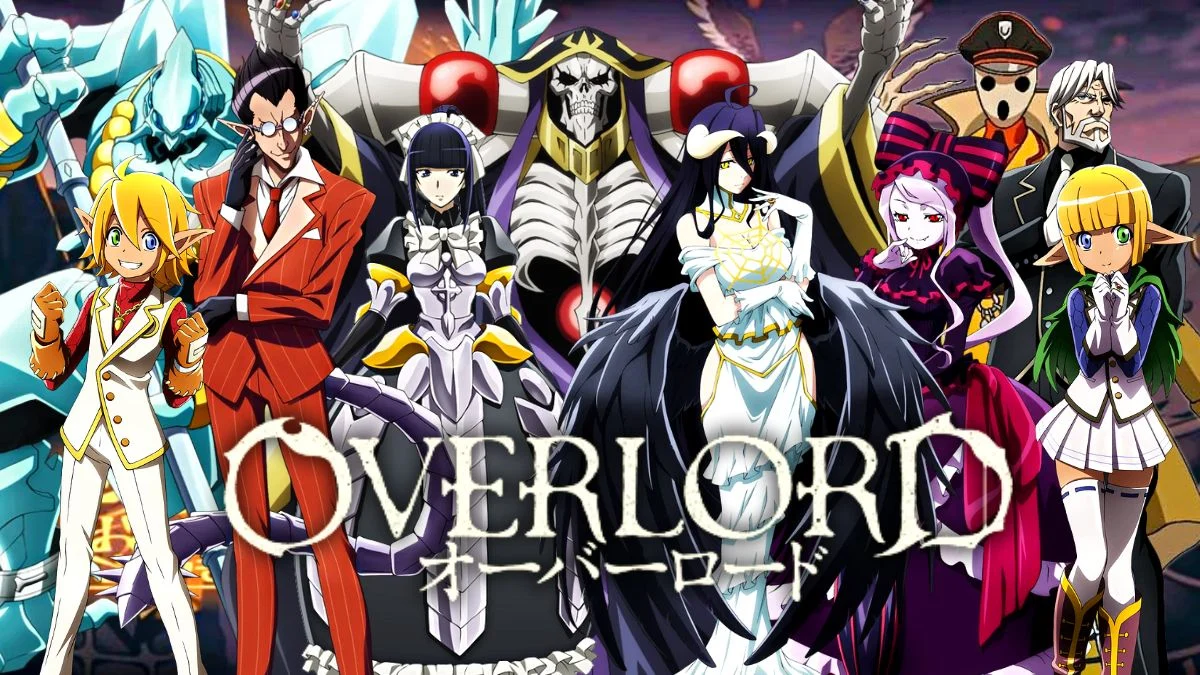
One of Overlord’s greatest strengths is its world-building. The anime does not just focus on Ainz but also provides perspectives from different nations and characters. Various factions, including human kingdoms, demihuman tribes, and rival guilds, add complexity to the story. Each group has its own motives and struggles, making the world feel immersive and unpredictable.
Ainz is a fascinating protagonist. Though he retains memories of his human life, he gradually loses his emotional attachments, becoming more of a true undead ruler. While he acts as a benevolent leader to his followers, he is ruthless to his enemies, demonstrating overwhelming power in battle. His internal monologues reveal his struggles with maintaining his image, adding depth to his character.
The supporting cast adds another layer of intrigue to the story. Albedo, the devoted and obsessive guardian, provides both comedic and dramatic moments. Shalltear, with her unpredictable nature, brings tension and excitement. Demiurge, the master strategist, often surprises Ainz by executing elaborate plans without his direct input. Each character has their own distinct personality and motivations, making Nazarick feel like a fully functioning entity.
Action sequences in Overlord are intense and often one-sided. Ainz’s strength is nearly unmatched, and many battles end with his overwhelming victory. However, the anime focuses not just on fights but also on strategy. Ainz carefully considers his moves, manipulating events from behind the scenes to achieve long-term dominance. His ability to predict and outmaneuver his enemies keeps the story engaging.
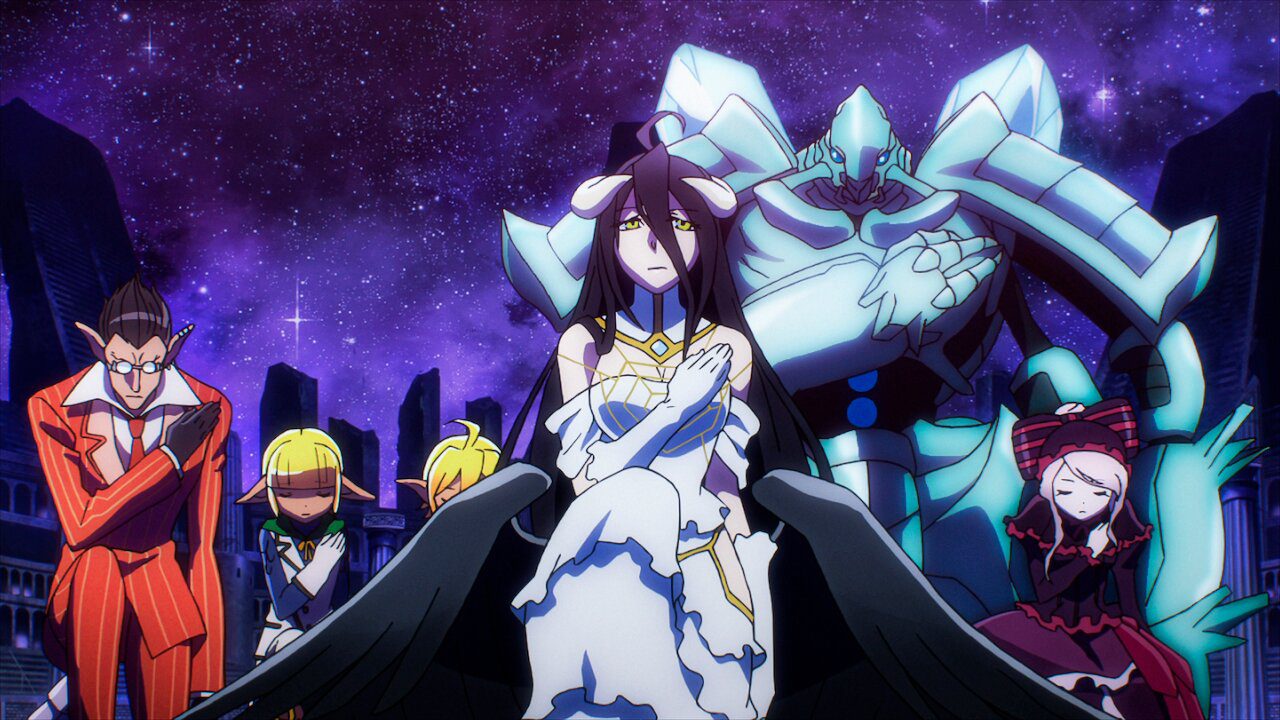
Visually, the anime presents a dark and gothic aesthetic. The designs of Nazarick’s guardians are distinct and detailed, emphasizing their monstrous yet elegant appearances. Battle effects, particularly Ainz’s magic, are well-animated, showcasing his immense power. The contrast between Nazarick’s grandeur and the more traditional medieval settings of human kingdoms enhances the visual storytelling.
The voice acting adds another layer of depth to the series. Satoshi Hino’s performance as Ainz captures both his commanding presence and his lingering traces of humanity. Yumi Hara’s portrayal of Albedo perfectly balances her obsessive affection and authoritative demeanor. The interactions between the cast bring out both the humor and intensity of the story, making every scene engaging.
The soundtrack, composed by Shuji Katayama, enhances the anime’s grand atmosphere. The opening themes, such as “Clattanoia” by OxT, set the tone with their dramatic energy. The background music shifts between eerie orchestral pieces and powerful battle scores, reinforcing the sense of danger and mystery within the story.
Ainz’s transformation from a simple gamer to a feared ruler is one of the anime’s most compelling aspects. He begins with a cautious approach, unsure of his place in this new world. Over time, he embraces his role as an overlord, making decisions that shape the fate of entire nations. His descent into a more calculating and ruthless mindset raises questions about morality and power.
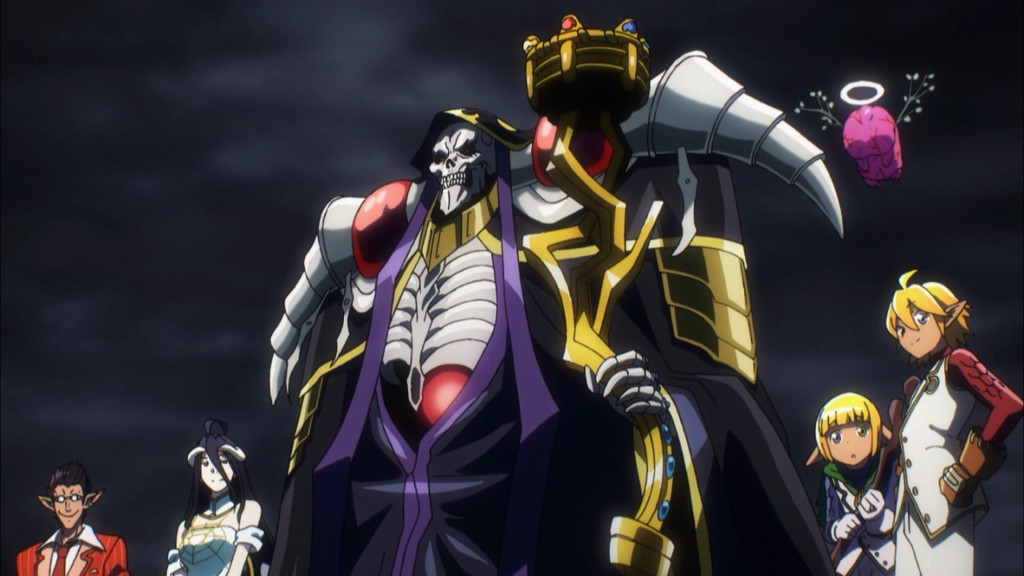
Overlord also explores themes of loyalty and perception. The NPCs of Nazarick view Ainz as an infallible god, interpreting his every action as part of an elaborate plan. This dynamic leads to amusing misunderstandings where Ainz is credited with far greater intelligence than he actually possesses. Despite his occasional confusion, he plays along, reinforcing his image as an all-knowing leader.
The anime’s political intrigue adds another layer of complexity. Ainz does not simply wage war—he manipulates alliances, influences rulers, and positions Nazarick as an unstoppable force. His calculated approach ensures that every move he makes has long-term consequences, keeping viewers engaged in his strategic conquests.
Overlord stands out for its unique take on the isekai formula. Instead of following an underdog hero’s journey, it presents a protagonist who starts at the top and seeks to expand his dominance. This reversal of expectations, combined with strong world-building, intense battles, and dark humor, makes it a must-watch for fans of fantasy and strategy-driven storytelling.
With each season, the stakes continue to rise, introducing new enemies, challenges, and moral dilemmas. Ainz’s journey into the unknown remains as compelling as ever, making Overlord one of the most engaging and thought-provoking anime in the genre.
8. That Time I Got Reincarnated as a Slime’s Demon Lord Arc
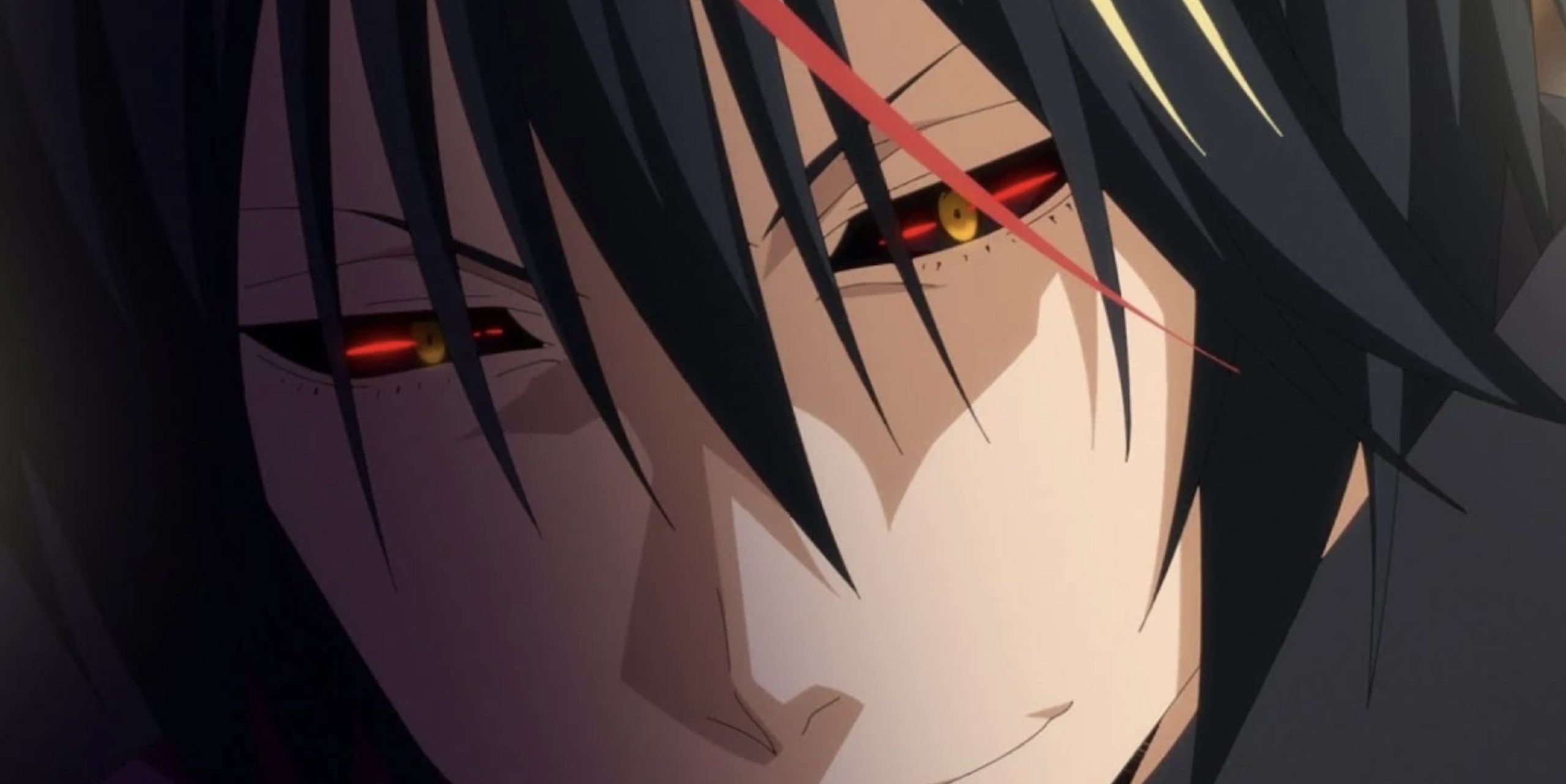
“That Time I Got Reincarnated as a Slime” stands out in the crowded isekai genre with its unique charm and ability to balance humor and fanservice with real and deadly threats faced by its protagonist, Rimuru Tempest. Nowhere is this more evident than in the gripping Demon Lord arc of the second season.
Viewers will find themselves unable to tear their eyes away from the screen as they are swept up in a whirlwind of emotions. Heartbreak and determination intertwine seamlessly throughout this storyline, offering a rollercoaster ride of shock, satisfaction, and even tears.
As their beloved slime protagonist faces off against formidable foes, viewers are treated to exhilarating battles and strategic counterattacks that showcase Rimuru’s growth and resilience.
The Demon Lord arc is a testament to the series’ ability to stay fresh and amazing, even as it heals darker and more complex themes.
Through its masterful storytelling and dynamic character development, “That Time I Got Reincarnated as a Slime” continues to amaze audiences and keep them on the edge of their seats with each new twist and turn.
For fans of the series and newcomers alike, the Demon Lord arc is a must-watch, offering a compelling and unforgettable journey that highlights the best of what “That Time I Got Reincarnated as a Slime” has to offer.
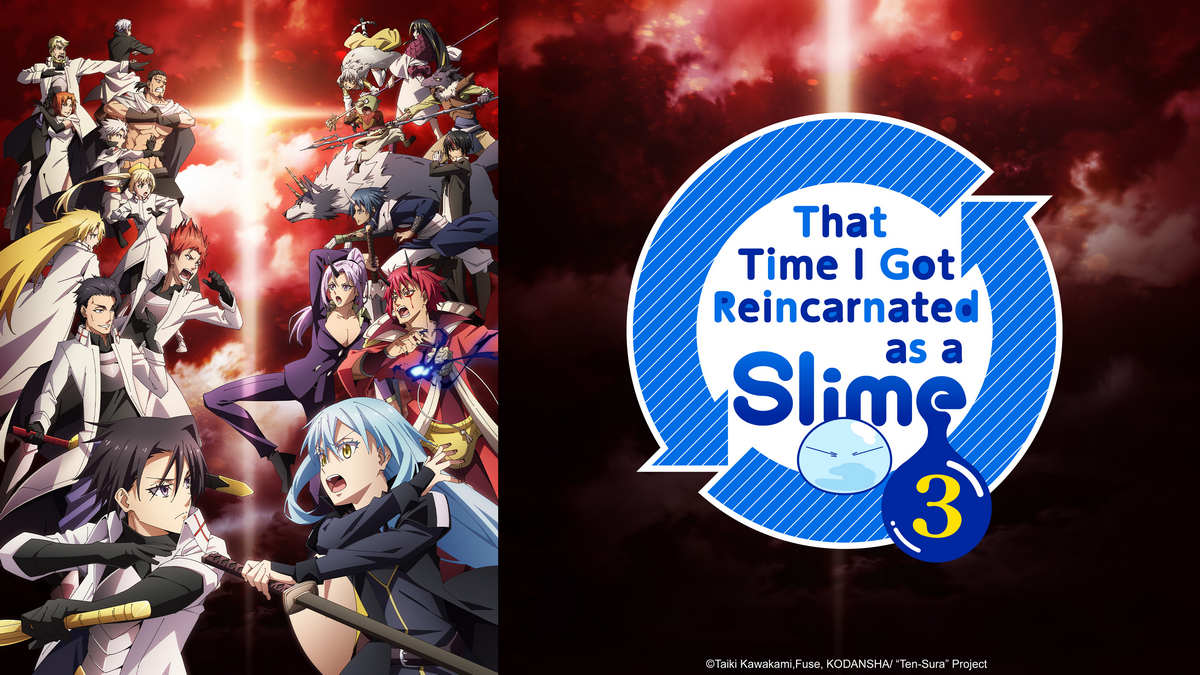
That Time I Got Reincarnated as a Slime is a fantasy anime that brings a unique perspective to the isekai genre. Adapted from Fuse’s light novel series, the anime first aired in 2018 and quickly gained recognition for its engaging world-building, well-developed characters, and balanced mix of action, humor, and diplomacy. Unlike many isekai protagonists, the main character does not begin as an overpowered hero but gradually builds his strength and influence.
The story follows Satoru Mikami, an ordinary office worker who is unexpectedly stabbed while protecting his colleague. As he dies, he hears a mysterious voice granting him unique abilities. When he awakens, he finds himself reincarnated in a fantasy world—not as a human but as a slime. With his new body, he possesses skills such as “Predator,” which allows him to absorb and mimic the abilities of anything he consumes.
Now renamed Rimuru Tempest, he soon befriends a powerful storm dragon named Veldora, who has been sealed away for centuries. Rimuru promises to find a way to free him and, in return, gains a new identity and powerful allies. From this moment, Rimuru embarks on a journey to create a peaceful and prosperous nation where all races can coexist, leading to the establishment of the Jura Tempest Federation.
One of the anime’s biggest strengths is its detailed world-building. Rather than focusing solely on battles, it explores themes of leadership, diplomacy, and cooperation. Rimuru gradually gathers allies, including goblins, orcs, ogres, and lizardmen, forming a society where different species live together harmoniously. This aspect of the story sets it apart from typical isekai anime that emphasize personal power over political and societal growth.
Rimuru is a refreshing protagonist. While he is incredibly strong, he does not rely on brute force alone. Instead, he uses intelligence and charisma to solve problems, earning the loyalty of those around him. His lighthearted personality and occasional moments of silliness make him an endearing character, while his moments of determination and ruthlessness add depth to his leadership.
The supporting cast is equally compelling. Characters like Shion, a devoted but clumsy secretary, Benimaru, a skilled warrior, and Shuna, a refined strategist, each bring something unique to the story. Even minor characters receive development, making the world feel alive and interconnected. Rimuru’s relationships with these characters are not just for comedy but also serve to highlight his growth as a leader.
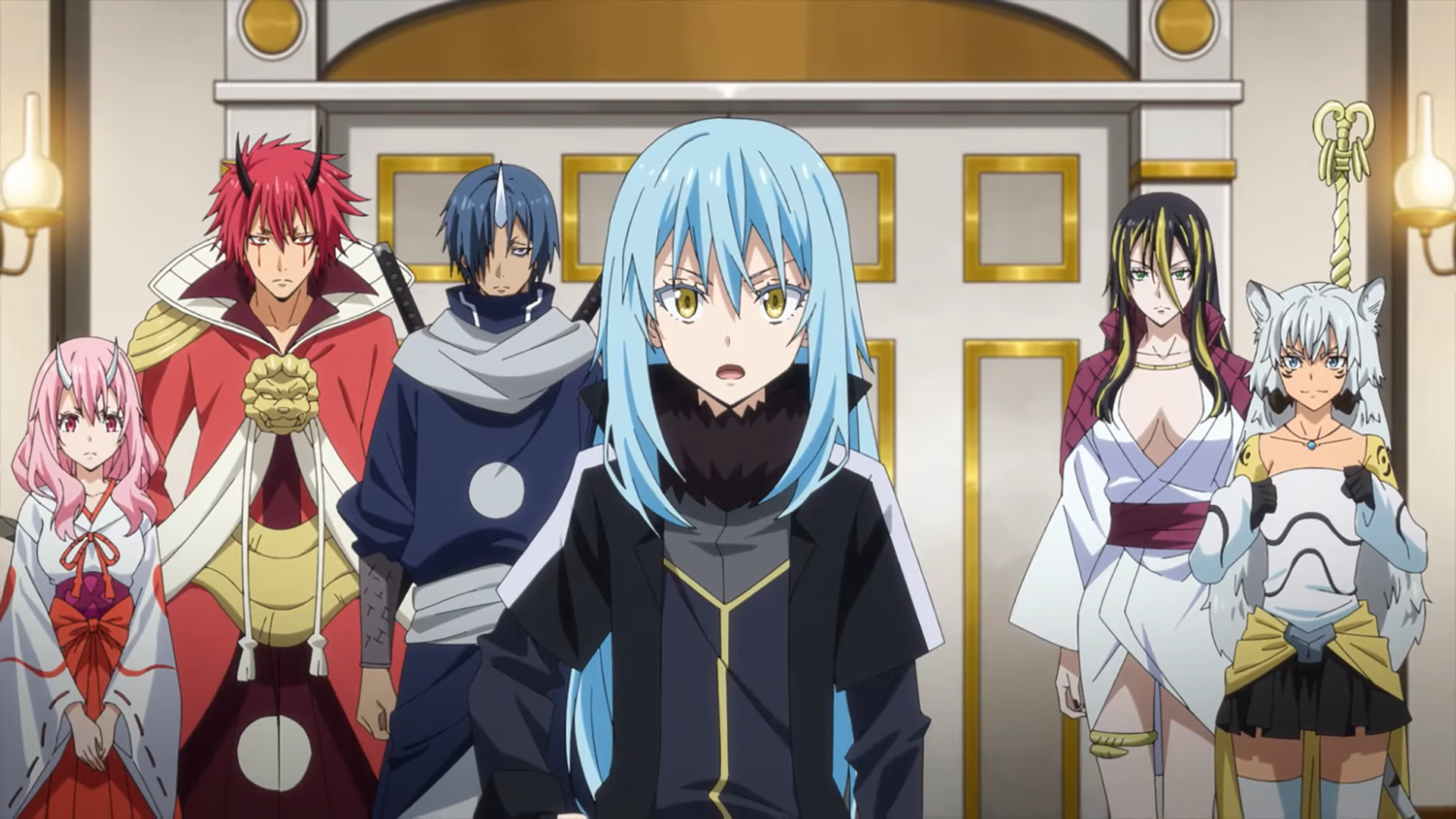
Action scenes in the anime are well-animated, with fluid combat choreography and powerful magical effects. Rimuru’s ability to adapt and absorb new powers allows for creative and unpredictable battles. The fight against the Orc Lord, the confrontation with the Demon Lords, and the clash with powerful adventurers all showcase the anime’s ability to balance action with storytelling.
Visually, the anime maintains a vibrant and polished aesthetic. The world is rich in detail, from lush forests to grand cities. Character designs are distinct and expressive, making each race visually unique. The animation quality remains consistent, especially during key fight sequences where magic effects and transformations enhance the spectacle.
The voice acting plays a significant role in bringing the characters to life. Miho Okasaki’s performance as Rimuru captures both the character’s playfulness and serious determination. Other notable performances include Tomoaki Maeno as Veldora and Sayaka Senbongi as Shuna, who add depth and personality to their roles. The chemistry between the cast makes every interaction feel natural and engaging.
The opening and ending themes contribute to the anime’s atmosphere. Songs like “Nameless Story” by Takuma Terashima and “Storyteller” by TRUE set the tone for Rimuru’s journey, blending excitement and emotion. The soundtrack, composed by Elements Garden, enhances both the grand battles and quieter, emotional moments, adding to the overall impact of the story.
A key aspect of the anime is its ability to balance humor with serious moments. While there are plenty of comedic interactions—such as Rimuru’s struggles with human customs or Shion’s questionable cooking—the story also delves into darker themes. The political conflicts, betrayals, and large-scale battles ensure that the stakes remain high.

Rimuru’s transformation from an ordinary man into a respected leader is one of the anime’s most compelling aspects. He starts with simple goals but gradually realizes the responsibility he carries. As he builds his nation, he faces moral dilemmas and the challenge of protecting his people while maintaining peace with other kingdoms.
The anime also introduces a variety of antagonists, from scheming nobles to powerful demon lords. Each conflict is not just about physical strength but also about strategy and negotiation. Rimuru must outthink his enemies, forging alliances and making difficult choices that shape the future of his growing nation.
The political intrigue in the anime is handled well. Instead of focusing solely on action, the story examines how nations interact, how alliances are formed, and how leadership requires more than just power. Rimuru’s ability to unite different races and factions highlights themes of acceptance and cooperation, making the anime more than just a fantasy adventure.
That Time I Got Reincarnated as a Slime stands out for its unique take on the isekai genre. It offers an engaging protagonist, strong world-building, and a mix of humor, action, and diplomacy. Rimuru’s journey from a simple slime to a respected ruler is filled with challenges, but his determination and kindness make him a character worth following.
With its dynamic characters, exciting battles, and well-developed setting, the anime continues to be one of the most enjoyable entries in the fantasy genre. By blending action, strategy, and character-driven storytelling, it creates a compelling experience that keeps viewers invested from beginning to end.
7. Konosuba: God’s Blessing on This Wonderful World’s Judicial Injustice Arc
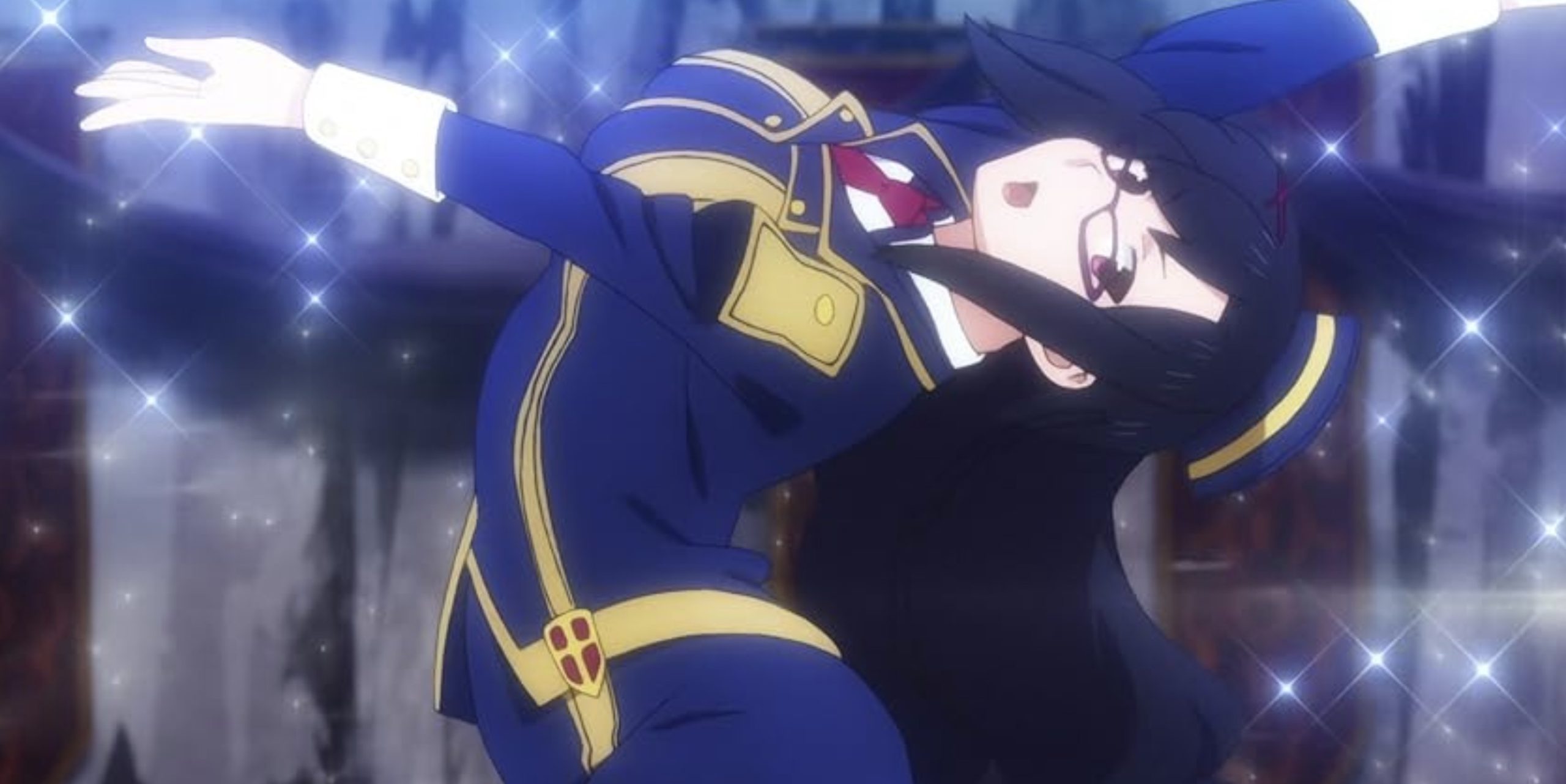
“KonoSuba” stands out as an unconventional isekai series that trades traditional heroics for a hilarious romp with a group of lovable misfits.
While many series rely on epic storylines or cliffhangers to keep viewers engaged, “KonoSuba” captures its audience’s attention through continuous laughter as Kazuma Sato and his ragtag group of friends stumble from one comedic mishap to the next.
Among the series’ many uproarious escapades, the Judicial Injustice arc shines as a prime example of its comedic brilliance. In this arc, Kazuma finds himself on trial for the destruction of a noble’s manor during a chaotic battle to save the city.
Forced to pay back the entire cost of the manor, Kazuma’s quest for a peaceful and prosperous life is once again thwarted, much to the amusement of viewers.
The Judicial Injustice arc perfectly covers the series’ penchant for comedic ineptitude, as Kazuma and his friends heil absurd challenges with hilariously disastrous results. From courtroom antics to slapstick humor, this arc keeps audiences hooked with its sheer delight and absurdity.
As “KonoSuba” continues to deliver side-splitting laughter and memorable moments, it’s no wonder that viewers are drawn in by the irresistible charm of Kazuma and his companions.
With each new escapade, the series proves itself as a master of comedy, leaving audiences eagerly anticipating what absurd misadventures lie ahead for our hapless heroes.
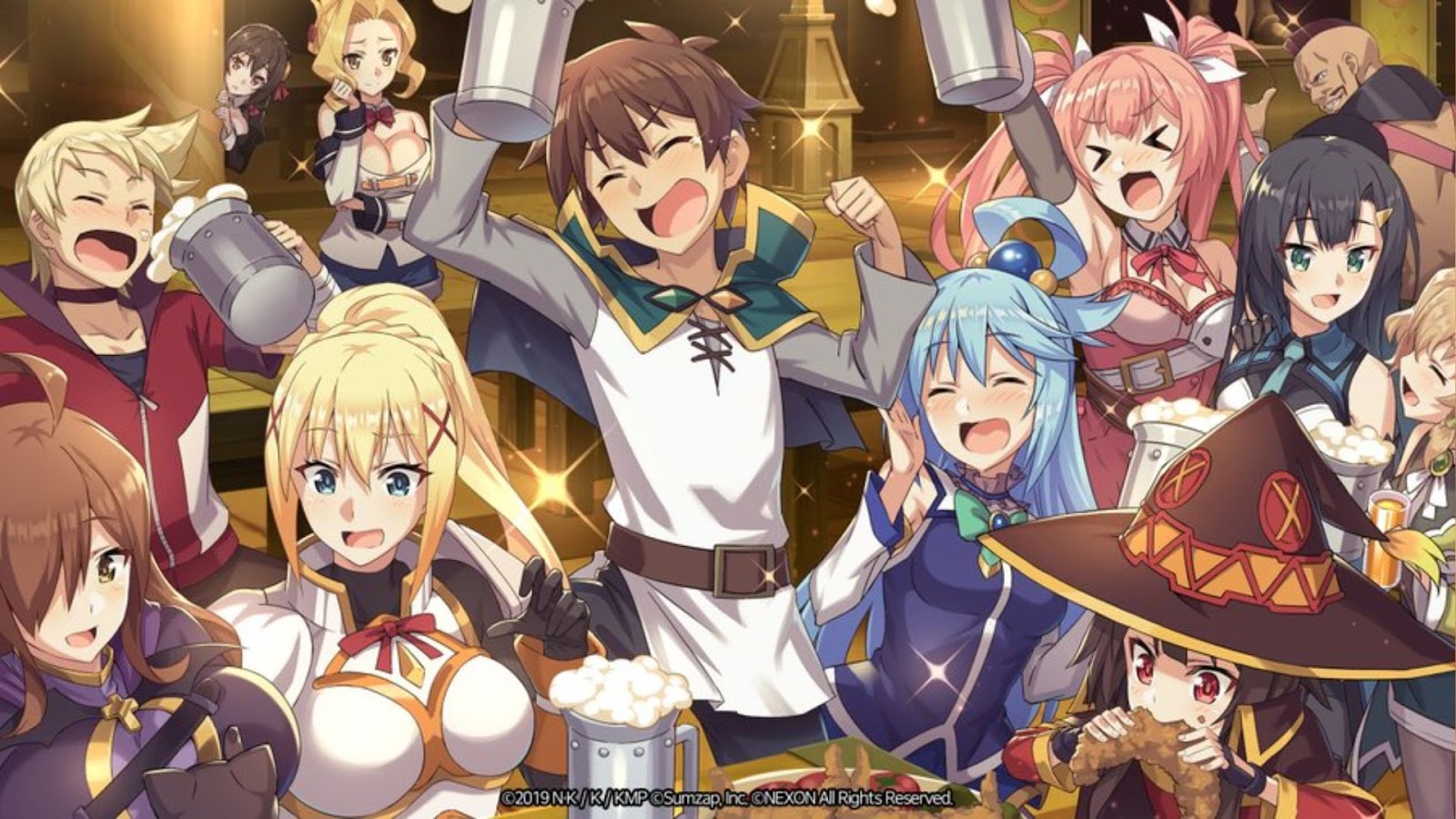
Konosuba: God’s Blessing on This Wonderful World! is a comedy-fantasy anime that brings a fresh and hilarious take on the isekai genre. Adapted from Natsume Akatsuki’s light novel, the series first aired in 2016 and quickly became popular for its absurd humor, quirky characters, and unpredictable storytelling. Unlike traditional hero-driven isekai, this one thrives on its dysfunctional cast and chaotic adventures.
The story follows Kazuma Satou, a shut-in gamer who dies in a rather embarrassing way and finds himself in the afterlife. There, he meets the goddess Aqua, who offers him a second chance in a fantasy world. He is allowed to take one item or ability with him, and out of spite, he chooses Aqua herself. However, he soon regrets this decision when he realizes that Aqua, despite being a goddess, is almost entirely useless.
Kazuma’s new life in this magical world is far from the heroic fantasy he imagined. Instead of becoming a legendary adventurer, he struggles with money, bad luck, and a completely dysfunctional party. Alongside Aqua, he recruits Megumin, an explosion-obsessed mage who can only cast one spell per day, and Darkness, a noble crusader with a bizarre love for pain and humiliation. Together, they form one of the most chaotic groups in anime.

One of the show’s greatest strengths is its humor. It parodies classic isekai tropes by putting its protagonist in ridiculous situations where things rarely go as planned. Kazuma, unlike most overpowered protagonists, has no special skills or divine protection. His cynical and self-serving personality makes him a refreshing contrast to the usual selfless heroes.
Aqua, despite her status as a goddess, is often more trouble than she’s worth. She is prideful, easily flustered, and prone to making situations worse. Megumin’s obsession with explosion magic is both hilarious and impractical, while Darkness enjoys suffering so much that she becomes a liability in combat. The dynamic between these characters leads to constant misunderstandings, arguments, and comedic disasters.
Despite its focus on comedy, Konosuba does not completely ignore world-building. The fantasy setting is well-crafted, featuring various towns, dungeons, and monsters. The Demon King’s army serves as the overarching threat, though Kazuma and his group often find themselves sidetracked by their personal misfortunes and everyday struggles.
The animation, handled by Studio Deen, embraces an exaggerated and expressive style that enhances the comedic timing. Characters frequently make ridiculous facial expressions, and the animation often shifts to absurdly detailed or wildly off-model moments to emphasize the humor. While some action scenes are surprisingly well-animated, the series prioritizes comedic exaggeration over traditional battle choreography.
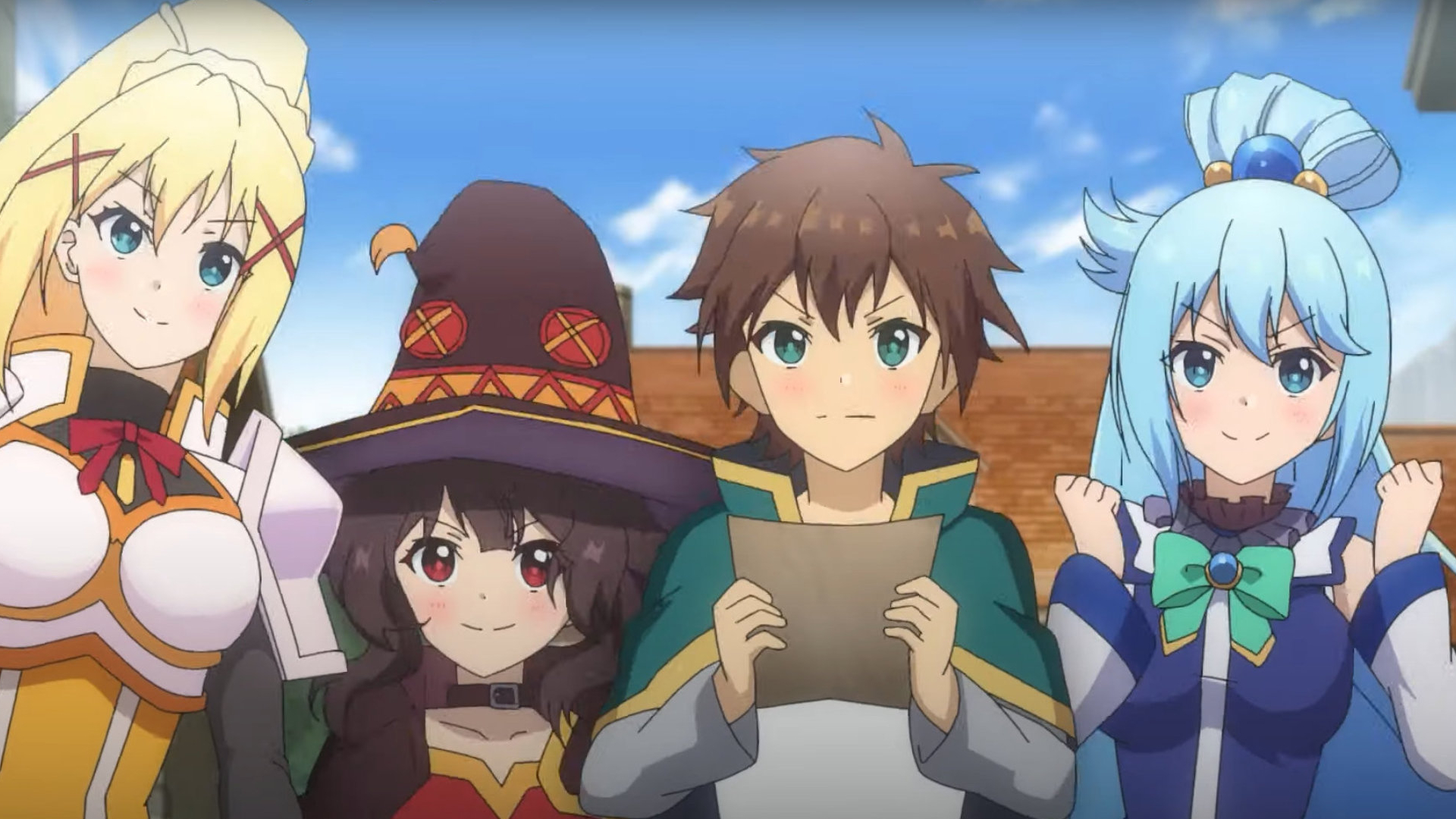
The voice acting contributes significantly to the show’s charm. Jun Fukushima’s portrayal of Kazuma captures his sarcasm and exhaustion perfectly, while Sora Amamiya’s performance as Aqua makes her tantrums and whining even funnier. Rie Takahashi’s enthusiastic delivery as Megumin and Ai Kayano’s dramatic yet ridiculous portrayal of Darkness add to the show’s comedic energy.
The opening theme, “Fantastic Dreamer” by Machico, sets the lighthearted and adventurous tone of the series. The upbeat melody and energetic visuals reflect the unpredictable and chaotic nature of Kazuma’s journey. The ending theme, “Chiisana Boukensha,” provides a more relaxed and whimsical contrast, emphasizing the unlikely camaraderie of the group.
While Konosuba is mainly a comedy, it occasionally touches on themes of friendship, perseverance, and finding joy in imperfection. Kazuma, despite his constant complaints, gradually forms a bond with his party members. They may be incompetent, but they rely on each other in their own strange way, creating a dynamic that feels both dysfunctional and endearing.

Kazuma himself stands out as one of the most unique protagonists in the isekai genre. He is neither a noble hero nor a ruthless anti-hero—just an ordinary guy trying to make the best of a ridiculous situation. His sarcastic nature and tendency to take shortcuts make him more relatable than the usual overpowered protagonists.
Aqua, despite her flaws, plays an essential role in the group’s dynamic. Her cheerful yet irresponsible behavior keeps things lively, and her divine magic, though often misused, occasionally proves useful. Megumin’s single-minded devotion to explosion magic is both a running gag and a defining character trait, while Darkness’ masochistic tendencies add another layer of humor to the party’s interactions.
The show’s episodic structure allows it to maintain a steady stream of comedic situations without getting bogged down by a complex plot. Each episode presents a new challenge, whether it’s fighting giant frogs, dealing with haunted mansions, or simply trying to earn enough money to survive. The unpredictability keeps the humor fresh and engaging.

Konosuba’s unique take on the isekai formula sets it apart from more serious fantasy anime. Instead of focusing on grand battles and epic quests, it highlights the absurdities of adventure life. The constant misfortunes that befall Kazuma and his party create a hilarious contrast to the usual power fantasies of the genre.
Although the series leans heavily on comedy, it does not neglect its fantasy elements. The setting feels alive, with diverse locations, magic systems, and an overarching conflict against the Demon King. However, true to its nature, even this serious premise is often undercut by humor, as Kazuma’s group continuously avoids their responsibilities.
Konosuba remains one of the most entertaining and beloved comedy anime of recent years. Its sharp wit, unforgettable characters, and self-aware humor make it stand out in a crowded genre. By turning traditional isekai tropes on their head, it delivers a refreshingly hilarious take on fantasy adventures. Whether it’s through misfortune, incompetence, or sheer absurdity, Kazuma and his dysfunctional party ensure that there is never a dull moment.
6. Tonikawa: Over the Moon for You’s Opening Arc

“Tonikawa: Over the Moon for You” presents an amazing romance that effortlessly keeps viewers smiling with each episode. Beneath the surface of this charming love story lies a tantalizing mystery surrounding the protagonist, Nasa Yuzaki’s, amazing new wife, Tsukasa.
The first arc of the series sets the stage for this mystery, drawing viewers in with its blend of romance and intrigue.
The story begins when Nasa encounters Tsukasa by chance and is immediately smitten. Their fateful encounter takes a dramatic turn when Nasa is struck by a bus while running to confess his feelings to her.
Miraculously, Tsukasa saves him from the brink of death, and Nasa, overwhelmed with gratitude and affection, impulsively proposes marriage to her.
However, Tsukasa disappears shortly thereafter, leaving Nasa to wonder if their encounter was nothing more than a dream. It isn’t until she unexpectedly reappears, demanding that Nasa fulfill his promise to marry her, that the true depth of their relationship begins to proceed.
As Nasa and Tsukasa heil the complexities of their unorthodox romance, viewers are drawn deeper into the mystery surrounding Tsukasa’s origins.
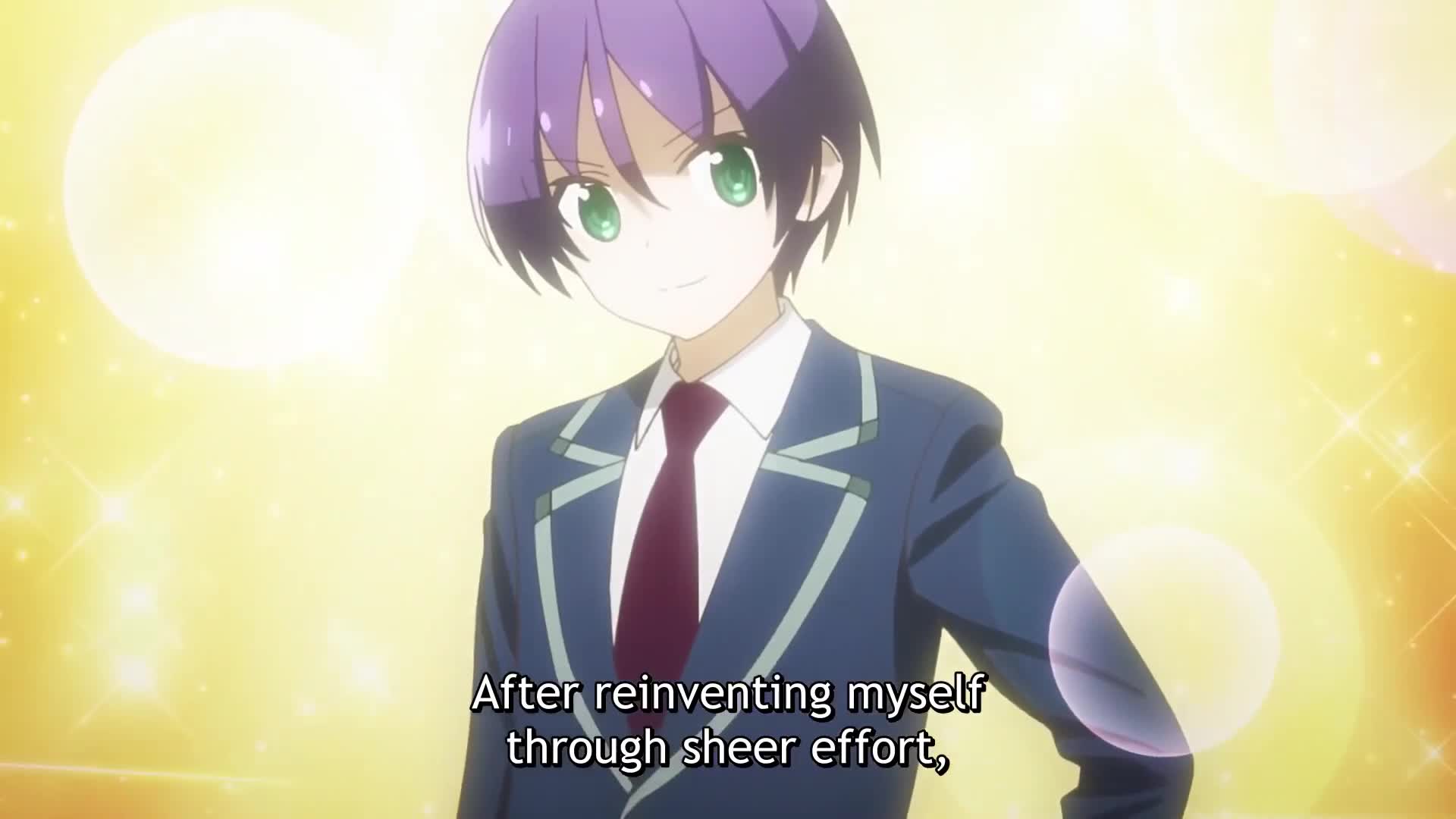
The first arc of “Tonikawa: Over the Moon for You” goes into the intricacies of Nasa and Tsukasa’s unconventional relationship, laying the groundwork for the larger mystery that will proceed as the series progresses.
With each new revelation, viewers are left eagerly anticipating what lies ahead, as they sense that there is more to Tsukasa than meets the eye.
As the series proceeds, “Tonikawa: Over the Moon for You” promises to keep viewers enthralled with its blend of romance, mystery, and heartwarming moments.
With its compelling storyline and endearing characters, it’s no wonder that viewers will find themselves irresistibly drawn to the enchanting Nasa and Tsukasa’s love story.
Tonikawa: Over the Moon for You is a romantic comedy anime that brings a refreshing take on love and marriage. Adapted from Kenjirou Hata’s manga, the series first aired in 2020 and quickly gained recognition for its wholesome and lighthearted storytelling. Unlike typical romance anime that focus on the journey to a relationship, this one begins with marriage, offering a unique perspective on love.
The story follows Nasa Yuzaki, a highly intelligent and ambitious young man with an unusual name that constantly draws attention. One night, while walking home, he encounters a mysterious girl and is immediately drawn to her beauty. However, before he can learn more about her, he is hit by a truck. The girl saves him, and despite his injuries, he chases after her to confess his love.
The girl, Tsukasa Tsukuyomi, responds with an unusual condition—she will only be with him if they get married. Without hesitation, Nasa agrees. However, after that night, she vanishes without a trace. Years later, on his 18th birthday, Tsukasa reappears at his doorstep, holding a marriage registration form. True to their promise, they officially become husband and wife, setting the stage for their heartwarming journey together.
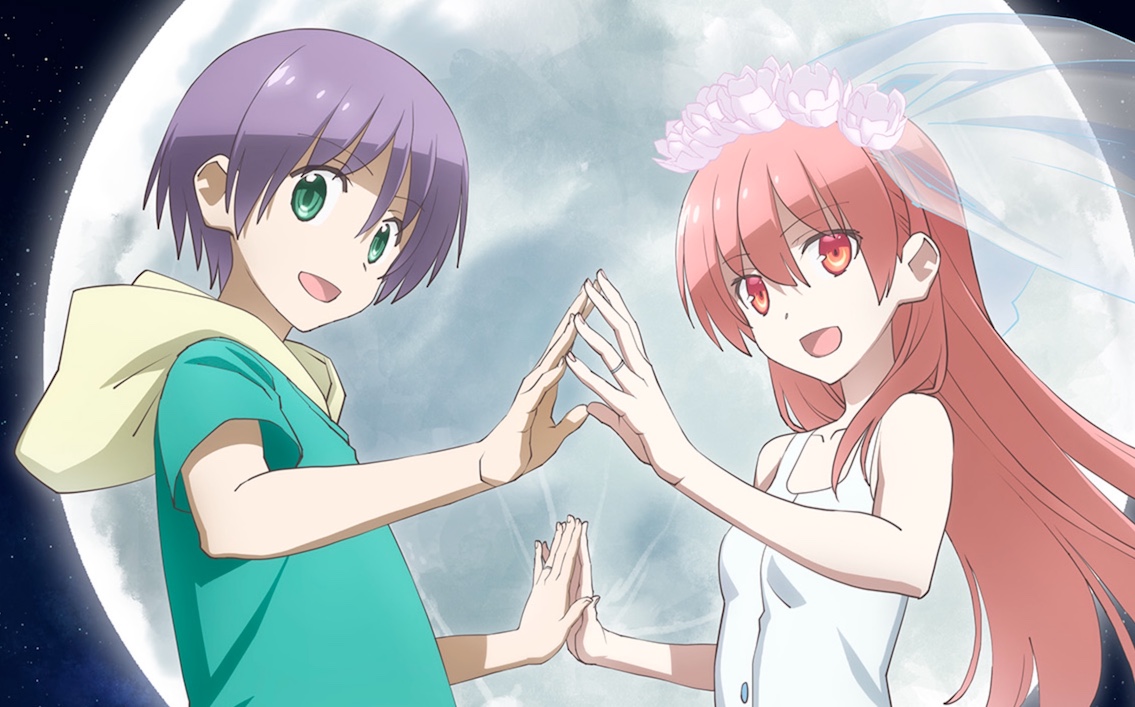
Unlike many romance anime that focus on school life or dating, Tonikawa centers on the daily life of a newlywed couple. Nasa and Tsukasa’s relationship is built on mutual trust, care, and the simple joys of sharing everyday moments. Whether it’s shopping for household items or holding hands for the first time, their interactions feel natural and endearing.
Nasa is a hardworking and intelligent individual, but his lack of experience with romance makes his relationship with Tsukasa both amusing and relatable. His admiration for her knows no bounds, and he constantly finds himself overwhelmed by her presence. Meanwhile, Tsukasa remains a mystery in many ways, but her caring nature and occasional teasing make her an engaging character.
Despite the series’ comedic and wholesome nature, there are subtle hints that Tsukasa may not be an ordinary girl. Her vast knowledge of history, unusual mannerisms, and cryptic references suggest a deeper backstory. While the anime does not fully explore this mystery, it adds an intriguing layer to her character.
Visually, the anime embraces a soft and colorful style that perfectly complements its warm and comforting tone. The bright backgrounds, smooth character designs, and expressive animations enhance the romantic atmosphere. The small details, such as Tsukasa’s subtle reactions or Nasa’s flustered expressions, add charm to every scene.
The supporting cast adds humor and depth to the story. Kaname Arisugawa, the outspoken bathhouse owner, often teases Nasa while offering him blunt relationship advice. Aya, Kaname’s older sister, serves as comic relief with her lazy yet playful personality. Chitose, Tsukasa’s self-proclaimed little sister, brings moments of jealousy and rivalry, adding lighthearted conflict to the narrative.

Music plays a crucial role in setting the anime’s tone. The opening theme, “Koi no Uta” by Akari Kitou, captures the sweet and dreamy essence of Nasa and Tsukasa’s love story. The ending theme, paired with gentle melodies, reinforces the series’ relaxing and romantic nature. The background music complements the cozy, slice-of-life atmosphere without overpowering the emotional moments.
One of the anime’s strengths lies in its ability to balance romance and comedy. Nasa and Tsukasa’s interactions are filled with amusing moments, from Nasa’s innocent excitement over holding hands to Tsukasa’s playful yet reserved personality. The humor never feels forced, making their relationship feel natural and endearing.
Beyond its comedic elements, the series explores themes of commitment, companionship, and finding happiness in the little things. While many romance anime focus on the pursuit of love, Tonikawa highlights what comes after—the everyday life of a couple learning about each other and growing together.
Nasa and Tsukasa’s relationship is refreshing because it does not rely on unnecessary drama or misunderstandings. Instead, their bond is based on sincerity, trust, and appreciation. Their affection is genuine, making their love story both heartwarming and reassuring to watch.
The anime also subtly raises questions about destiny and fate. Nasa’s chance encounter with Tsukasa changed his life forever, and their instant connection feels almost otherworldly. While the series does not provide concrete answers, it leaves room for interpretation, adding a touch of intrigue to their romance.
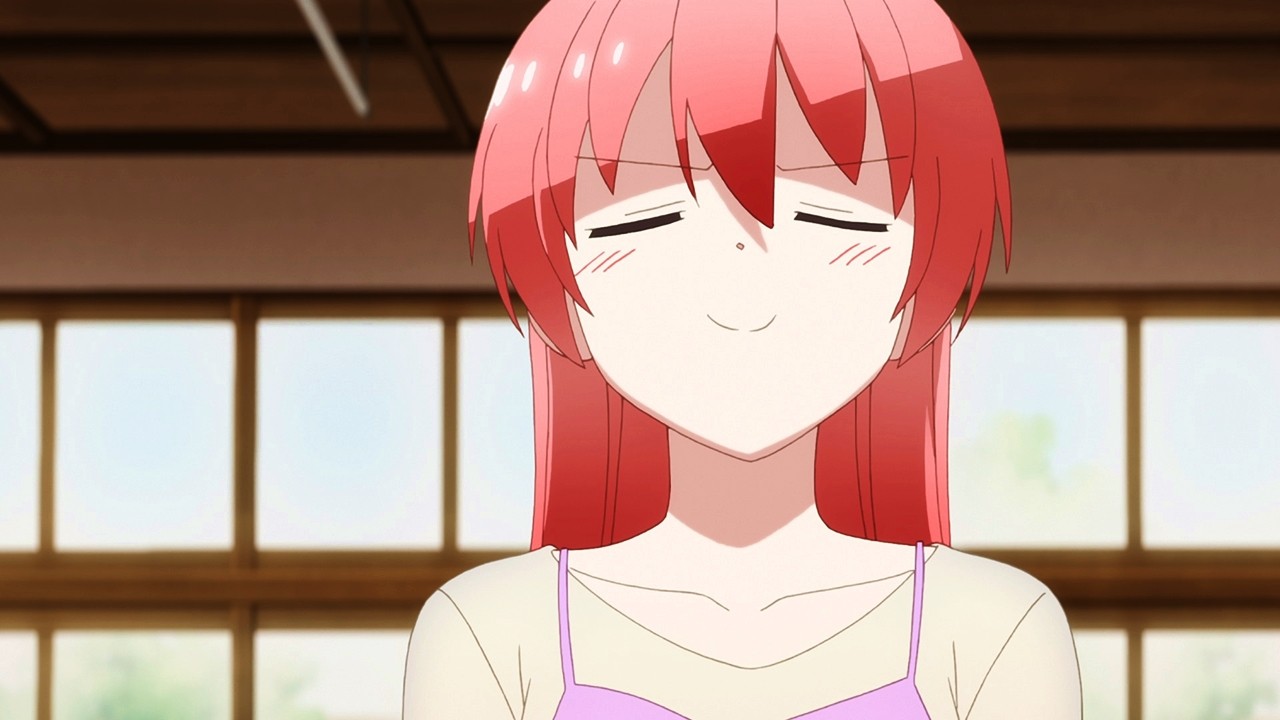
Tonikawa’s pacing is light and easygoing, making it an enjoyable watch for those looking for a feel-good romance. Each episode follows the couple’s everyday adventures, from cooking meals to experiencing their first trip together. The lack of heavy conflict allows the story to focus on their growing bond rather than external drama.
Despite its simple premise, the anime leaves a lasting impression through its warmth and sincerity. Nasa and Tsukasa’s relationship may seem idealized, but it captures the essence of love as something built on trust, kindness, and shared experiences. Their moments together, no matter how small, feel meaningful.
Tonikawa: Over the Moon for You stands out as a wholesome and uplifting romance that focuses on love after marriage rather than before. Through its charming characters, lighthearted humor, and heartfelt storytelling, it offers a refreshing take on relationships. Whether it’s through quiet conversations or silly misunderstandings, Nasa and Tsukasa’s journey proves that love is about cherishing the little moments together.
5. We Never Learn’s Opening Arc
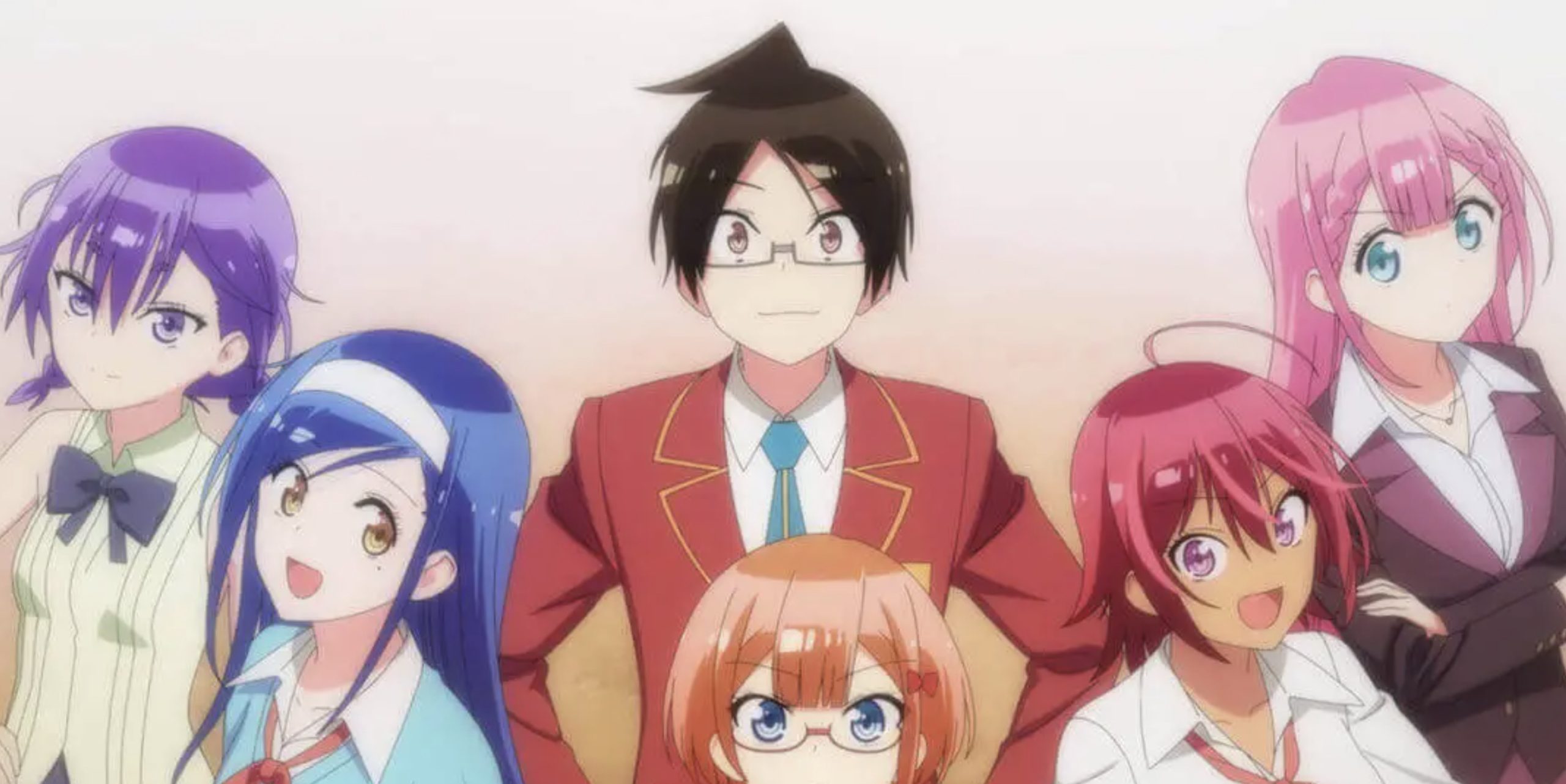
“We Never Learn” follows the journey of protagonist Nariyuki Yuiga as he takes on the role of tutor for some of his classmates, only to discover that they struggle with the subjects they’ve chosen to study.
Undeterred by their initial failures, Nariyuki perseveres, continuing to work with them and offering his unwavering support even in the face of spectacular setbacks.
Despite moments of doubt and uncertainty, Nariyuki’s determination and genuine belief in the potential of the girls he tutors shine through, amazing viewers with his steadfast commitment.
The opening arc of “We Never Learn” introduces viewers to the charming trio of Uruka Takemoto, Fumino Furuhashi, and Rizu Ogata, each with their own unique struggles and aspirations.
As Nariyuki heils the complexities of tutoring these three girls, he encounters a myriad of challenges and heartwarming moments that shape their relationships and drive the narrative forward.
While the series may initially appear to be a lighthearted comedy, it quickly reveals layers of depth as it explores the characters’ personal growth and the bonds they form with one another.
“We Never Learn” skillfully balances humor with heartfelt moments, drawing viewers in with its relatable characters and engaging storyline.
As Nariyuki and his classmates begin on their academic journey together, viewers will find themselves eagerly anticipating each new twist and turn.
Whether you’re sitting down to watch a few episodes or beginning a binge-watching session, the opening arc of “We Never Learn” is sure to pique your curiosity and leave you eager for more.
4. Goblin Slayer’s Water Town Arc
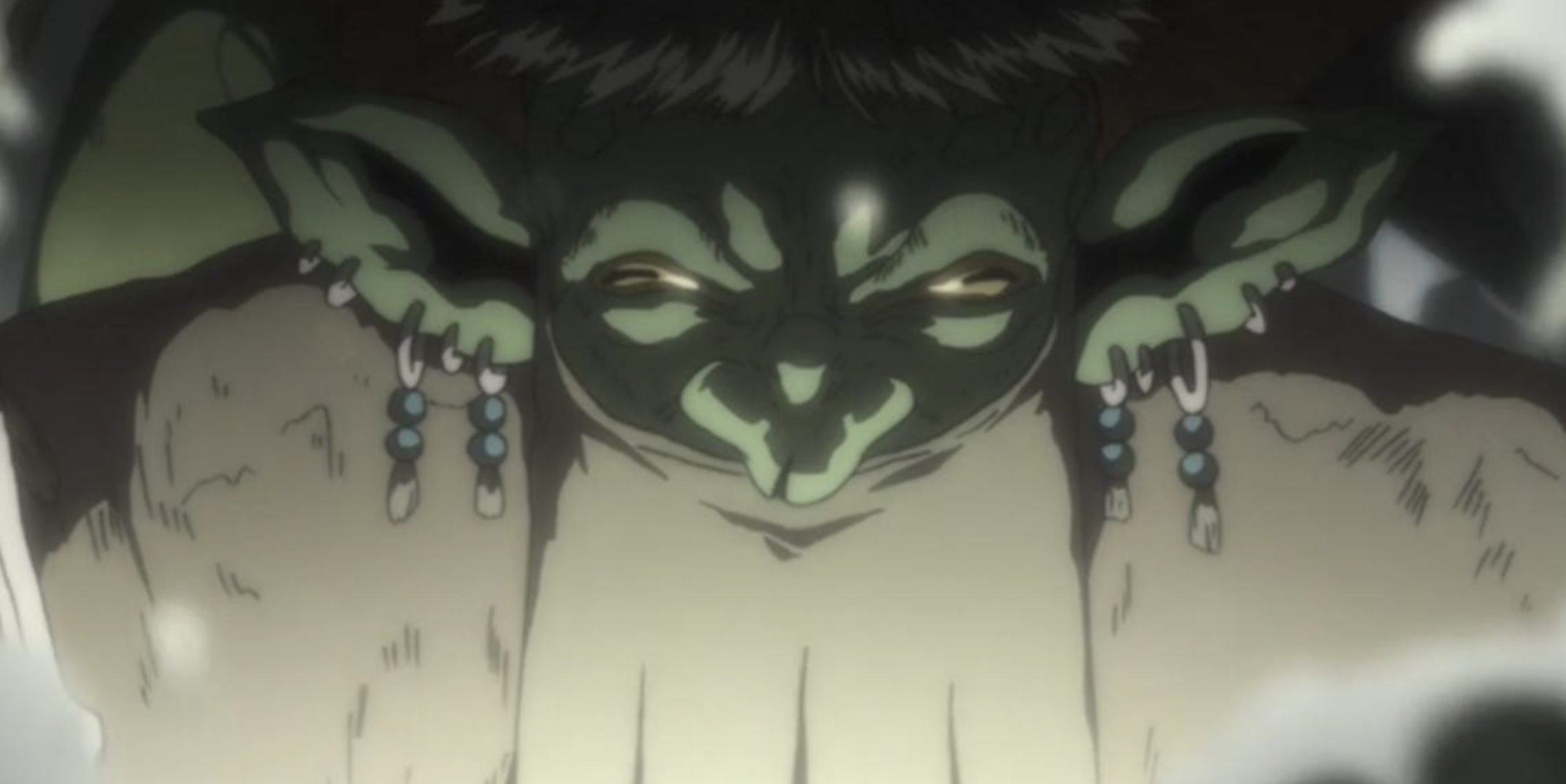
In Goblin Slayer, where pinpointing a single best arc proves challenging, the Water Town Arc stands out as a formidable contender. The titular Goblin Slayer is less a man and more a force of nature in his relentless pursuit of eradicating goblins.
His unwavering hatred for these vile creatures isolates him from all but a select few companions, who struggle to grasp the true depths of goblin depravity. However, the horrors lurking beneath the surface of Water Town swiftly shatter any illusions.
Goblin Slayer goes into weighty themes that may unsettle some viewers, yet these discomforts serve a purpose. While not every audience member may seek out the darkness inherent in a fantasy like Goblin Slayer, the Water Town Arc offers a peek of the series at its finest.
It showcases bravery, loyalty, and an indomitable will to survive—qualities that define not only the characters but also the essence of the series itself.
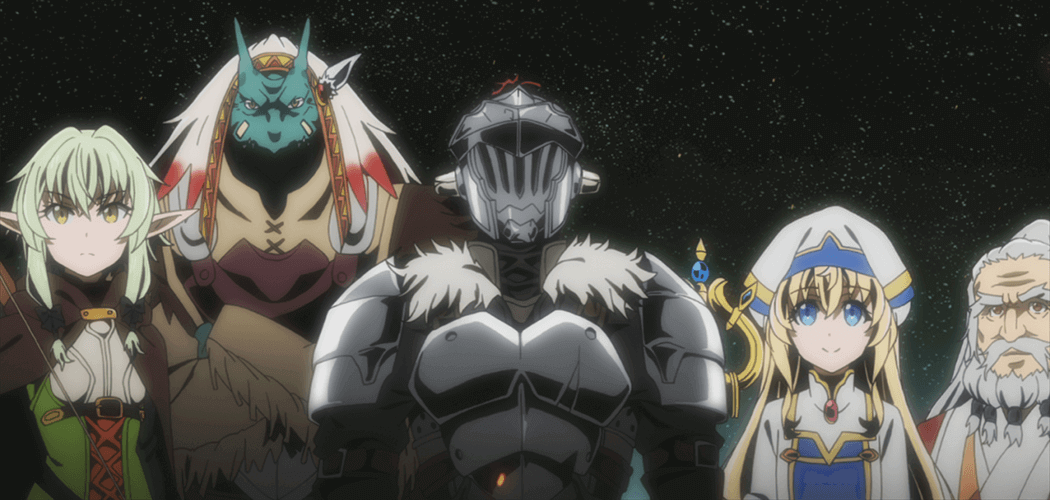
This arc, though positioned differently from its light novel counterpart, highlights the evolving bond between Goblin Slayer and his allies-turned-friends. As they confront the harrowing realities of their world, their bonds are forged in the crucible of adversity, becoming stronger with each trial they endure.
In the Water Town Arc, viewers will find themselves drawn into a tale of camaraderie, resilience, and the unyielding pursuit of justice in the face of overwhelming darkness.
While Goblin Slayer may not be for everyone, this arc exemplifies the series at its most compelling, offering rich storytelling that leaves a lasting impact on those who dare to venture into its depths.
 Goblin Slayer is a dark fantasy anime that brings a brutal and intense approach to the adventurer genre. Adapted from Kumo Kagyu’s light novel series, the anime first aired in 2018 and quickly gained attention for its graphic content and unconventional storytelling. Unlike traditional fantasy tales filled with grand quests and noble heroes, this story focuses on a single warrior’s relentless battle against one of the most underestimated creatures in fantasy—goblins.
Goblin Slayer is a dark fantasy anime that brings a brutal and intense approach to the adventurer genre. Adapted from Kumo Kagyu’s light novel series, the anime first aired in 2018 and quickly gained attention for its graphic content and unconventional storytelling. Unlike traditional fantasy tales filled with grand quests and noble heroes, this story focuses on a single warrior’s relentless battle against one of the most underestimated creatures in fantasy—goblins.
The protagonist, known only as Goblin Slayer, is a man dedicated entirely to the eradication of goblins. Unlike most adventurers who seek glory by hunting powerful monsters, he chooses to focus on eliminating goblins due to a traumatic experience from his past. His obsession makes him an outcast among other adventurers, but his brutal efficiency earns him respect and fear.
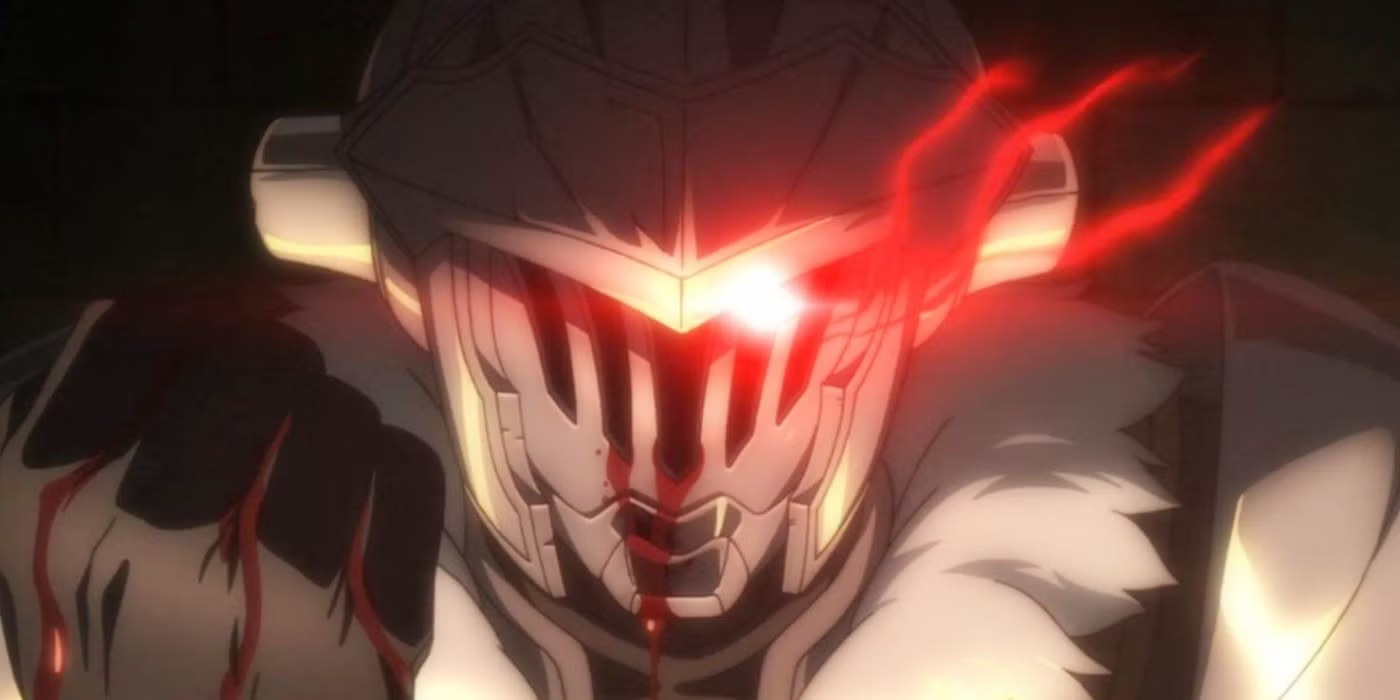
The anime begins with a young priestess joining her first adventuring party, expecting an ordinary mission. However, her group underestimates the goblins, leading to a disastrous encounter. Just as all seems lost, Goblin Slayer arrives and saves her, showcasing his brutal yet precise combat style. After witnessing his skill and conviction, the priestess decides to follow him, becoming his first true companion.
While Goblin Slayer operates in solitude, he gradually builds a small but capable team. The party includes High Elf Archer, a proud and skilled marksman; Dwarf Shaman, a wise and humorous spellcaster; and Lizard Priest, a warrior-monk with a deep sense of honor. Despite their initial skepticism about his obsession, they come to respect his dedication and tactics.
The anime does not shy away from showing the horrifying nature of goblins. Unlike their typical portrayal as weak and foolish, these creatures are cunning, ruthless, and capable of horrific acts. This darker take on goblins adds tension to the story, making each battle feel like a true struggle for survival.
Visually, Goblin Slayer leans into a gritty, grounded style. The dark color palette and detailed backgrounds enhance the harsh atmosphere of the world. The fight scenes are well-animated, highlighting Goblin Slayer’s precise and methodical combat style. Unlike flashy swordplay seen in other fantasy anime, his approach is tactical, using traps, ambushes, and calculated strikes to eliminate threats.
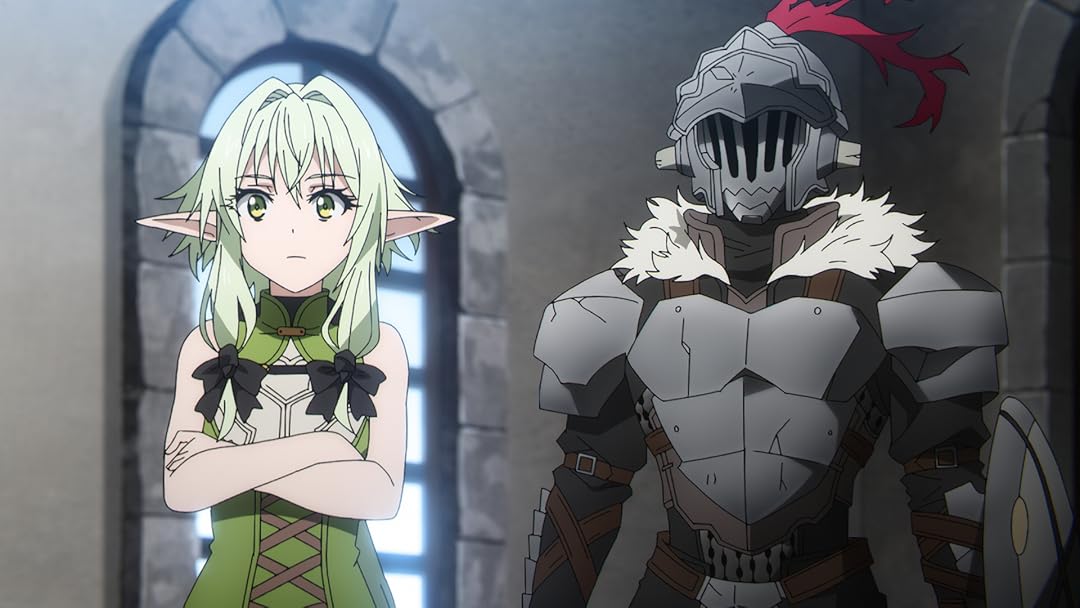
The character of Goblin Slayer remains shrouded in mystery for much of the series. His emotionless demeanor and relentless pursuit of goblins make him seem cold, yet small moments reveal a deeper humanity. His growing relationships with his party members and the people in his guild show that, despite his singular focus, he is not entirely devoid of emotion.
Priestess, who begins as a naïve and inexperienced adventurer, undergoes significant growth throughout the series. Her exposure to Goblin Slayer’s methods challenges her ideals, forcing her to balance compassion with the harsh realities of battle. Her journey from a frightened novice to a capable support fighter adds emotional depth to the story.
The supporting cast plays an essential role in fleshing out the world. The Guild Receptionist, a kind-hearted woman who handles adventurer requests, admires Goblin Slayer’s dedication despite his grim reputation. Cow Girl, his childhood friend, provides a rare sense of normalcy in his life, reminding him of the home he fights to protect.
One of the anime’s standout aspects is its world-building. While many fantasy series focus on high-stakes conflicts and legendary heroes, Goblin Slayer explores the lives of ordinary adventurers. The ranking system, the adventurer’s guild, and the casual conversations between characters give the setting a sense of realism, making it feel like a lived-in world rather than just a backdrop for action.
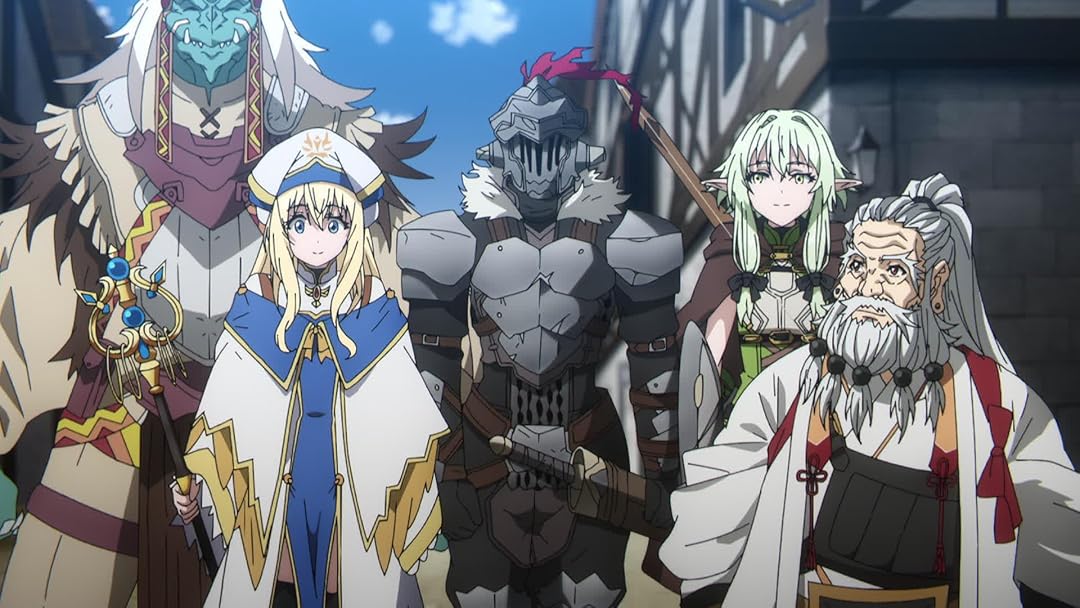
Music plays a crucial role in setting the tone. The soundtrack shifts between eerie tension during goblin hunts and softer melodies during moments of respite. The opening theme, “Rightfully” by Mili, captures the anime’s dark and intense nature, while the ending theme provides a more reflective contrast.
Despite its grim themes, Goblin Slayer balances its darkness with moments of warmth and camaraderie. The interactions between party members, their occasional humor, and their gradual trust in each other create a strong emotional core that prevents the anime from becoming overwhelmingly bleak.
The series also raises deeper questions about trauma, revenge, and purpose. Goblin Slayer’s actions are driven by his past, but as he interacts with others, he begins to find meaning beyond just extermination. The story subtly explores whether vengeance alone is enough to sustain a person and what it means to truly live.
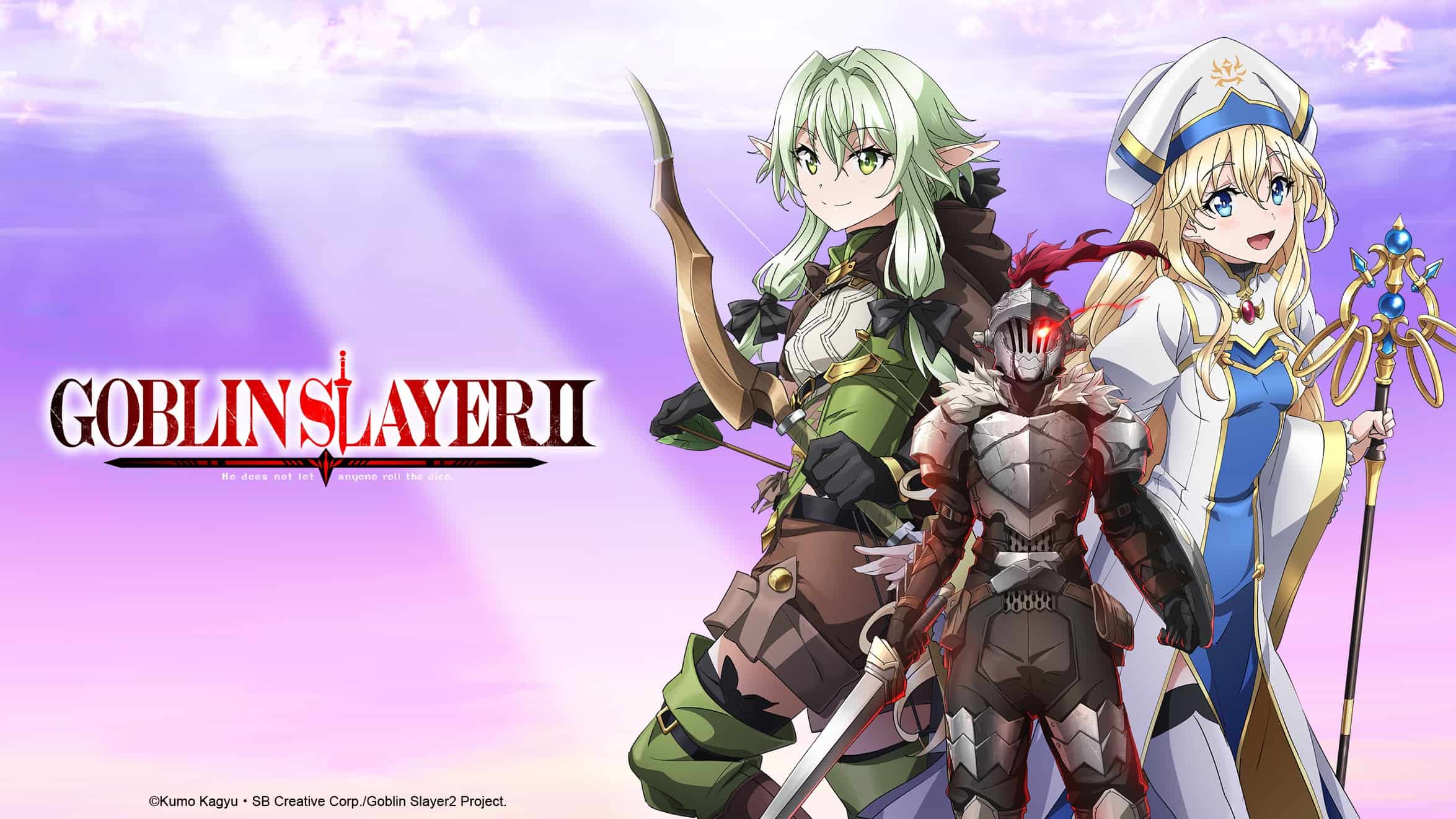
Goblin Slayer’s approach to combat sets it apart from typical fantasy anime. Instead of relying on sheer power, he uses knowledge, preparation, and strategy. His fights are more about survival than glory, emphasizing the dangers of even the weakest monsters when underestimated.
While the anime’s violent content may not be for everyone, it provides a gripping and intense take on the fantasy genre. Its grounded approach, compelling protagonist, and atmospheric storytelling make it a standout series for those who appreciate darker narratives.
Goblin Slayer is not about grand heroics or destined champions. It is a story of a man who refuses to let others suffer as he once did. Through its brutal yet thought-provoking storytelling, it offers a different perspective on the fantasy genre—one that is both haunting and deeply engaging.
3. Is It Wrong To Try To Pick up Girls in a Dungeon?’s Deep Floors Arc
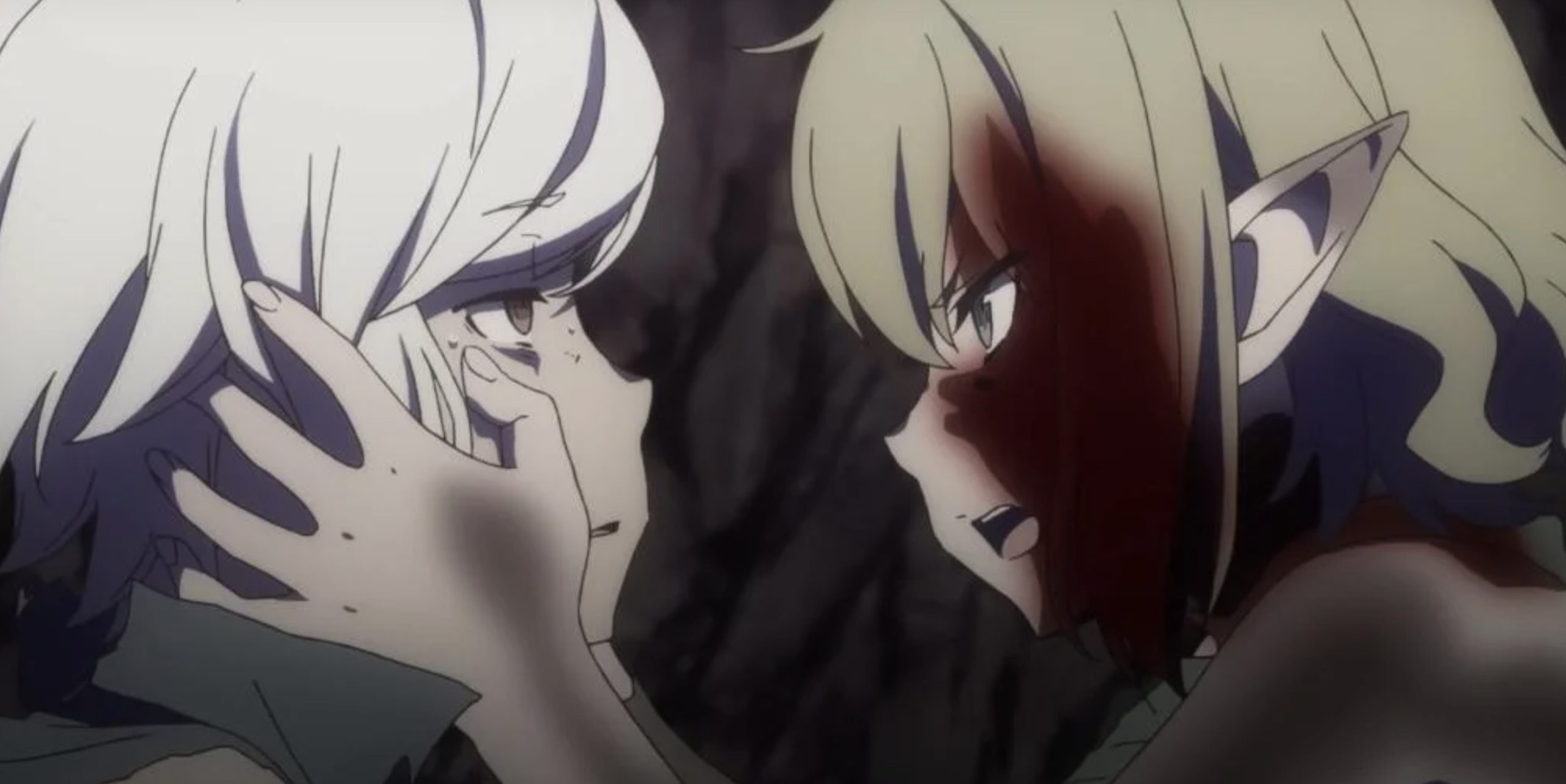
The journey to the Deep Floors stands as one of the most amazing arcs in “Is It Wrong to Try to Pick Up Girls in a Dungeon?”
Over the course of multiple seasons, protagonist Bell Cranel and his companions have undergone significant growth, both in strength and confidence, as they go deeper into the treacherous depths of the DanMachi dungeon. However, the challenges posed by the Deep Floors prove to be a daunting trial for our heroes.
What makes binging the Deep Floors Arc so irresistible is its compelling storytelling and relentless pacing. Each episode proceeds like a gripping tale in its own right, leaving viewers on the edge of their seats and yearning for more.
From heart-pounding battles to poignant emotional moments, this arc offers a rich narrative depth and character development that will keep audiences thoroughly engaged.
One of the biggest challenges for viewers is resisting the urge to stop watching after each episode’s end. The allure of the story is so strong that it’s easy to find oneself eager to go back in and continue the journey alongside Bell and his companions.
Indeed, the Deep Floors Arc has a magnetic quality that makes it difficult to put down, leaving viewers longing to discover what twists and turns await them in the next installment.
For those seeking a compelling narrative filled with thrilling battles and emotional resonance, the journey to the Deep Floors delivers on all fronts.
With its amazing storytelling and unforgettable moments, this arc promises an unforgettable viewing experience that will leave audiences eagerly anticipating each new episode.
2. Call of the Night’s First Arc
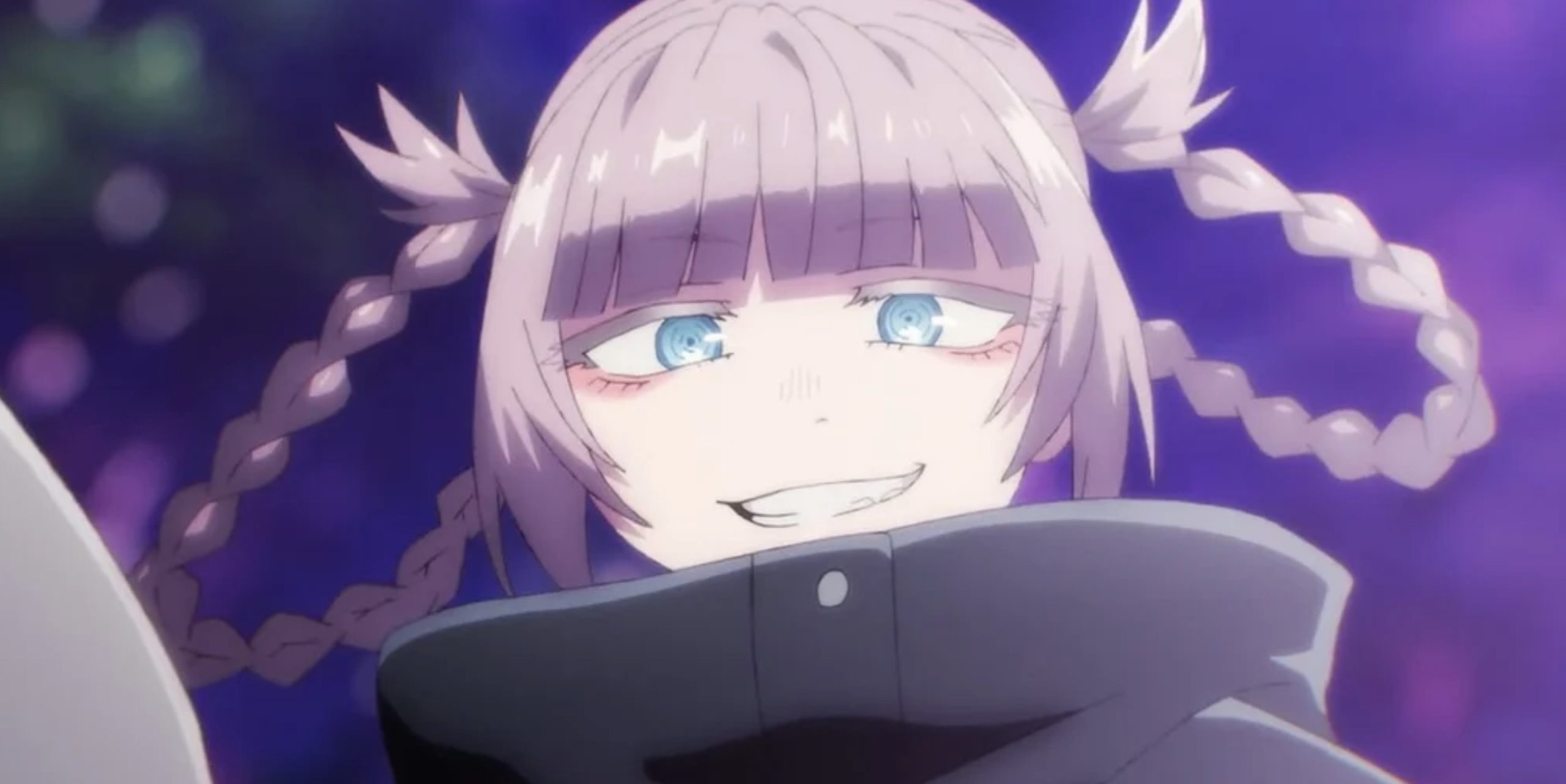
“Call of the Night” taps into the intoxicating allure of the nightlife, capturing the exhilarating sense of newness and excitement that accompanies one’s first foray into the nocturnal world.
Through the eyes of protagonist Kou Yamori and his vampiric companion Nazuna Nanakusa, viewers are transported into a brimming with vibrant colors, intriguing encounters, and endless possibilities.
The anime’s opening arc shines brightly as a perfect choice for a swift binge-watch session. Each episode dazzles with its stunning visuals, immersing viewers in a kaleidoscope of hues that illuminate the darkness of the night.
The cast of characters, with their distinctive personalities and humorous interactions, adds an extra layer of enjoyment to the experience, ensuring that every moment is memorable and entertaining.
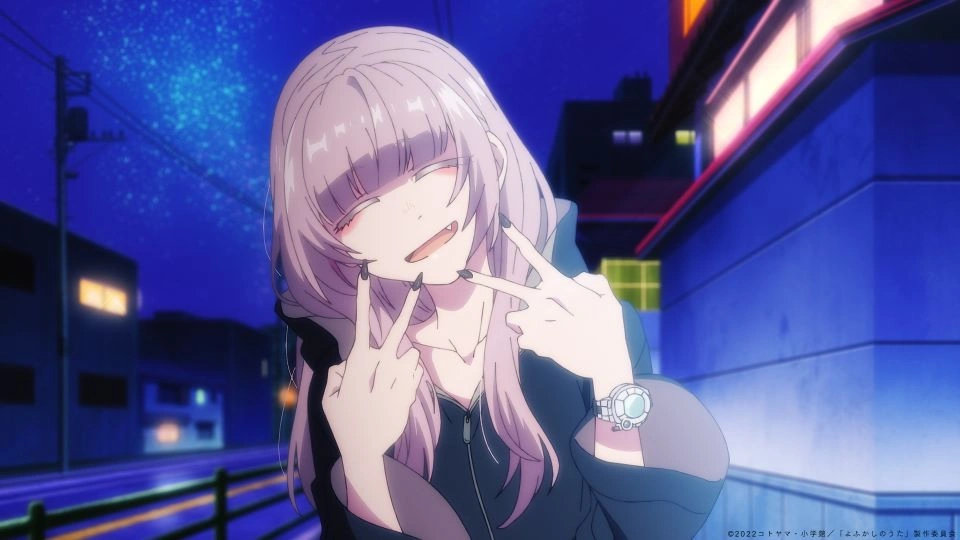
At its core, “Call of the Night” celebrates the shared love of the night and the indomitable spirit of those plagued by insomnia, forging a bond between its characters that resonates with viewers.
Nazuna and Kou’s inaugural adventure is nothing short of amazing, drawing viewers into a world that defies description yet promises to ignite the imagination of anyone seeking an anime with a darker, more nocturnal edge.
For those craving an anime experience that goes into the mysteries and wonders of the night, “Call of the Night” beckons with its irresistible charm and amazing storyline.
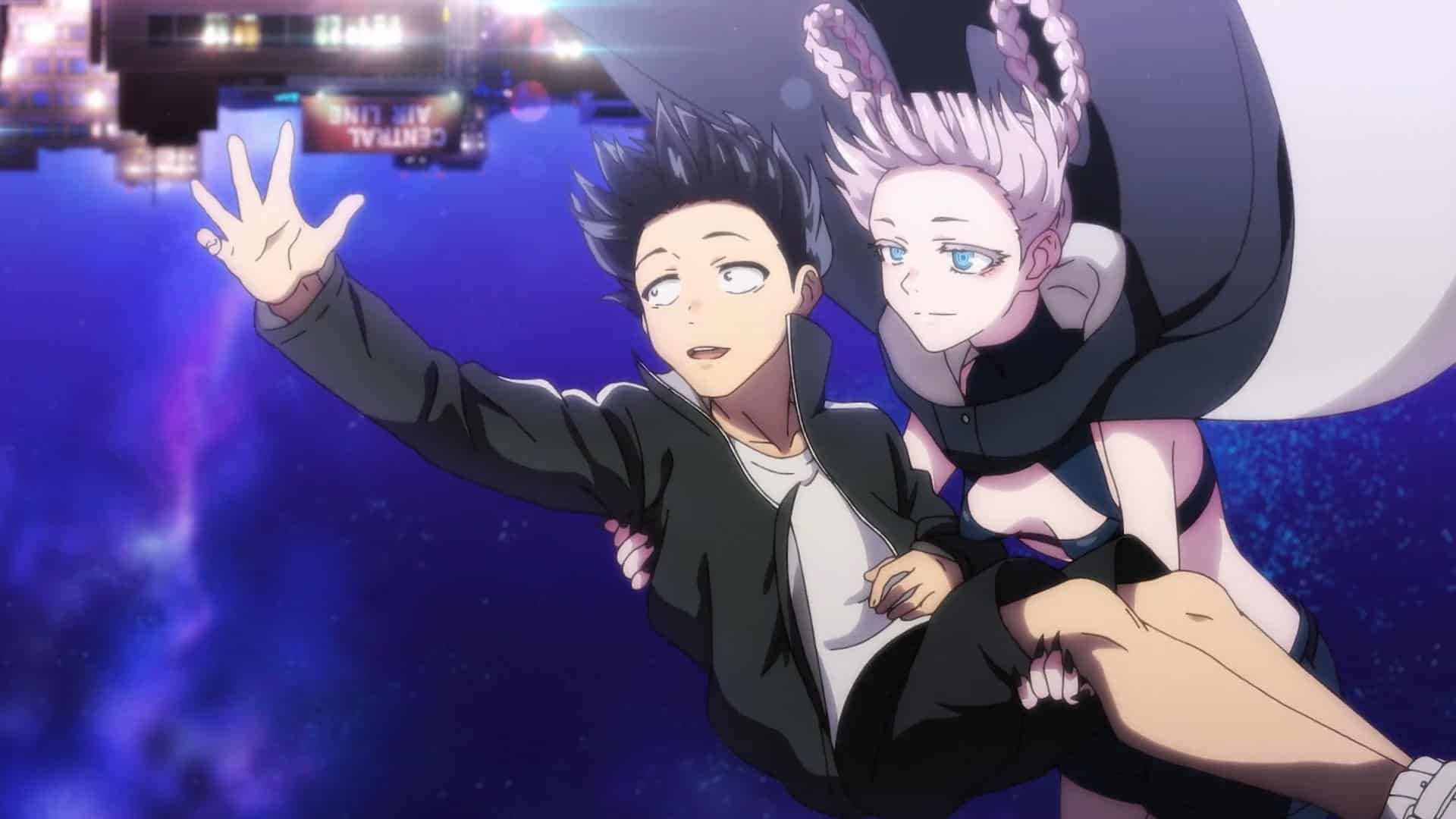
Call of the Night is a supernatural romance anime that blends the quiet beauty of nighttime with an unconventional love story. Adapted from Kotoyama’s manga, the anime aired in 2022 and quickly stood out for its striking visuals, atmospheric storytelling, and unique take on vampires.
The story follows Kou Yamori, a 14-year-old boy who struggles with insomnia and dissatisfaction with his daily life. Unable to find joy in ordinary routines, he begins wandering the streets at night, searching for something different. During one of his late-night walks, he encounters Nazuna Nanakusa, a mysterious and playful vampire who changes his perception of the night.
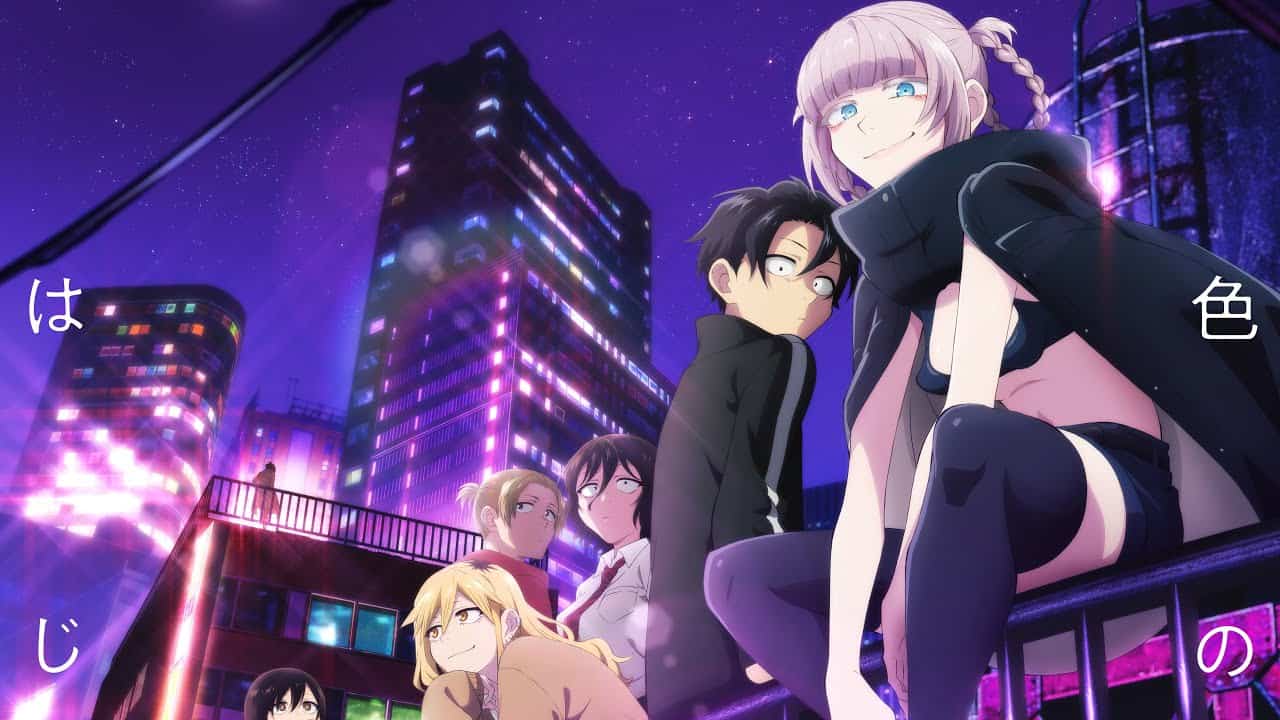
Nazuna introduces Kou to the allure of nighttime freedom, showing him a world untouched by the expectations of the day. Unlike traditional vampires, she is mischievous and carefree, preferring to enjoy the pleasures of life rather than terrorize humans. Intrigued by her lifestyle, Kou expresses his desire to become a vampire himself.
However, there is a condition—Kou must fall in love with Nazuna for the transformation to occur. This creates an unusual dynamic between them, as Kou tries to understand love while deepening his bond with her. Their interactions shift between playful teasing, philosophical discussions, and moments of genuine connection.
The anime’s setting plays a crucial role in its storytelling. The night is depicted as a place of adventure, mystery, and self-discovery, contrasting sharply with Kou’s mundane daytime existence. The neon-lit streets, quiet parks, and empty cityscapes create an atmosphere that feels both lonely and enchanting.
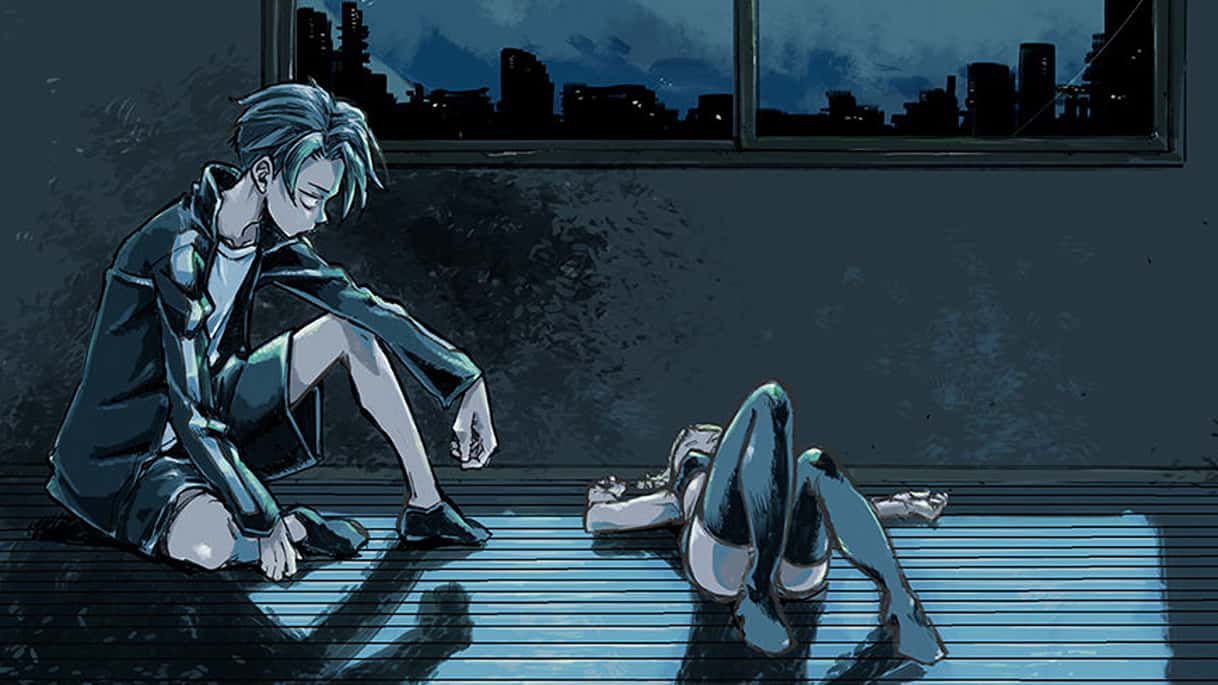
Visually, Call of the Night excels in capturing the essence of nocturnal beauty. The use of deep purples, blues, and pinks gives the anime a dreamlike quality, emphasizing the contrast between the vibrant night and the dullness of the day. The animation enhances the characters’ movements, making moments of flight and transformation feel fluid.
Kou’s journey is not just about becoming a vampire; it’s about finding meaning in his life. His struggle with emotions, love, and purpose makes him a compelling protagonist. While he appears detached at times, his curiosity and gradual emotional awakening create depth in his character.
Nazuna, on the other hand, is an unpredictable yet endearing presence. Her carefree attitude hides layers of loneliness and vulnerability, making her more than just a playful vampire. As she spends more time with Kou, she begins to question her own feelings, adding complexity to their relationship.
The anime also introduces other vampires who present different perspectives on immortality and love. Some see their condition as a burden, while others embrace it fully. This variety in viewpoints adds richness to the narrative, showing that eternal life comes with its own dilemmas.
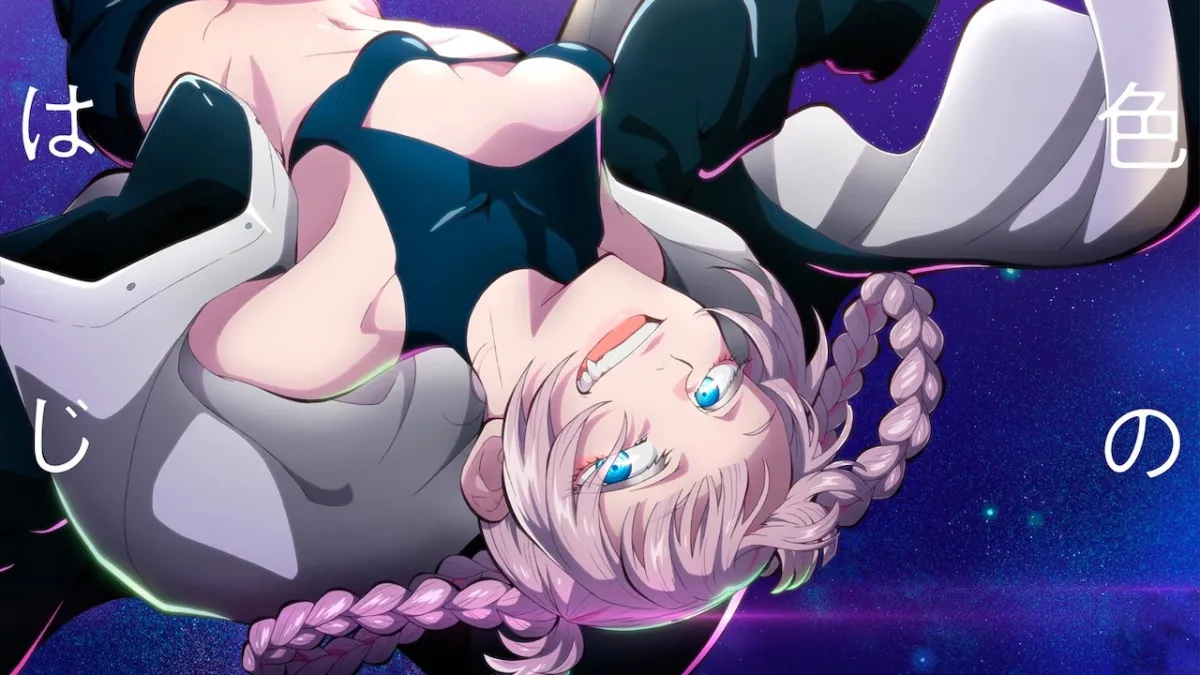
Music plays a significant role in shaping the anime’s mood. The opening theme, “Daten” by Creepy Nuts, perfectly matches the nocturnal energy of the show, while the ending theme, “Yofukashi no Uta,” reinforces the sense of escapism that defines Kou’s experience. The background music blends electronic beats with soft melodies, enhancing both the quiet and exhilarating moments.
While the anime is primarily a romance, it also explores themes of freedom, identity, and human connection. Kou’s desire to escape his ordinary life reflects a common struggle among teenagers searching for purpose. His relationship with Nazuna becomes a metaphor for stepping outside societal norms to find one’s own path.
Despite its supernatural elements, Call of the Night remains grounded in relatable emotions. Kou’s uncertainty about love, Nazuna’s fear of attachment, and the loneliness that both characters experience make their bond feel genuine. Their interactions are filled with humor, vulnerability, and moments of quiet understanding.

The supporting characters further develop the story’s themes. Akira, Kou’s childhood friend, represents the stability of daytime life, contrasting with Nazuna’s carefree nocturnal existence. Other vampires, each with their own views on relationships and human nature, add depth to the exploration of immortality and love.
What makes Call of the Night unique is its blend of romance and philosophical reflection. Instead of focusing solely on traditional love stories, it questions what love means and how people define it for themselves. Kou’s journey is not just about romance but about finding a reason to keep moving forward.
The anime’s pacing is relaxed, allowing viewers to absorb its atmosphere and themes. Moments of introspection are balanced with lighthearted banter and action sequences, keeping the story engaging without feeling rushed. This balance makes the show both thought-provoking and enjoyable.
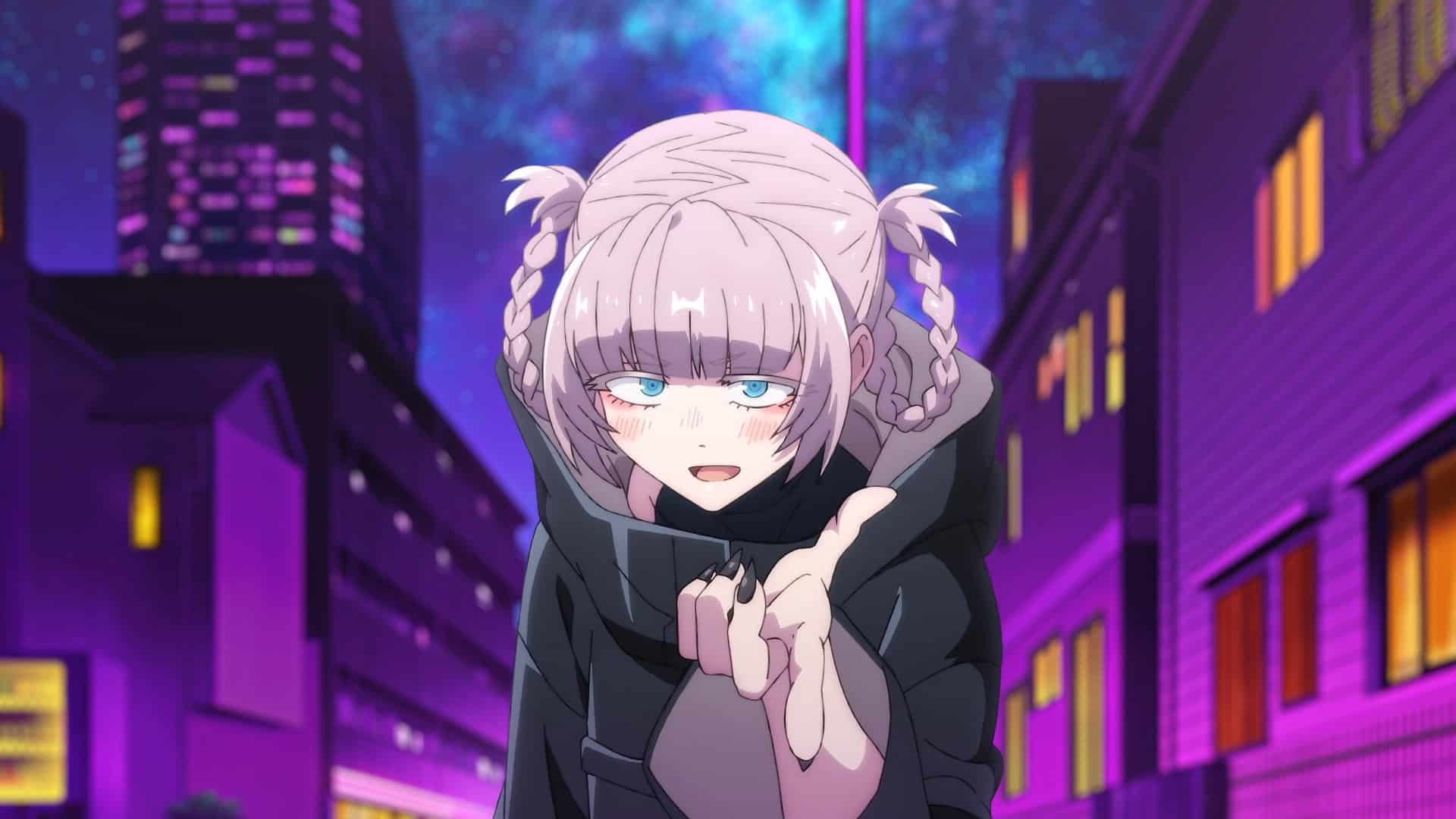
The chemistry between Kou and Nazuna is one of the anime’s strongest aspects. Their relationship is built on mutual curiosity, companionship, and an evolving sense of trust. While their bond starts as a playful agreement, it slowly deepens into something more meaningful, blurring the lines between friendship, love, and personal fulfillment.
With its unique atmosphere, memorable characters, and thoughtful storytelling, Call of the Night stands out as an unconventional yet compelling romance anime. Its blend of supernatural elements, philosophical themes, and stunning visuals make it an experience worth watching for those looking for something beyond typical love stories.
1. My Dress-Up Darling’s Shizuku Kuroe Arc
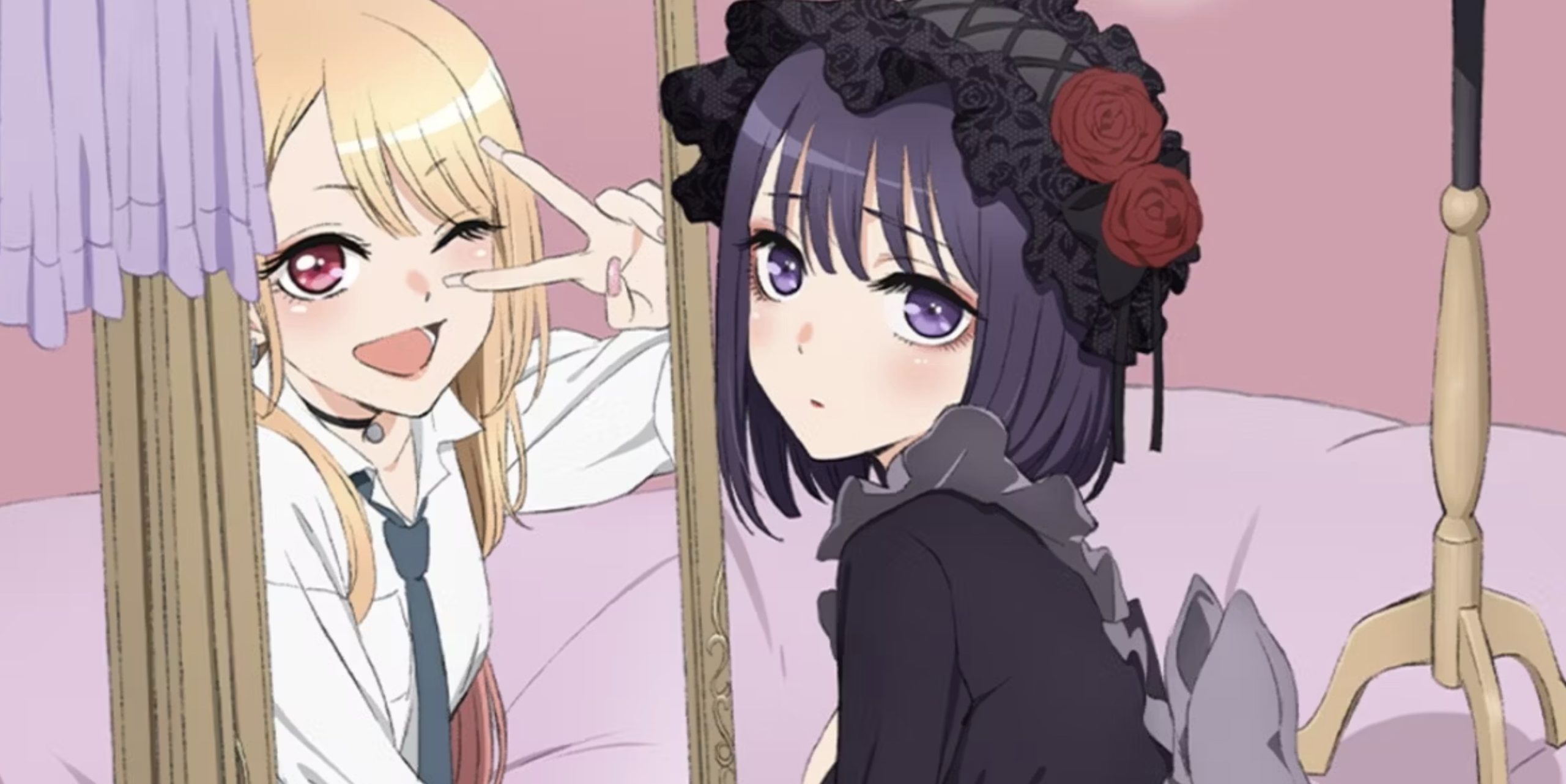
“My Dress-Up Darling” took the anime world by storm upon its debut in 2022, amazing viewers with its unique animation style, insightful exploration of Japan’s cosplay scene, and the endearing chemistry between its protagonists, Wakana Gojo and Marin Kitagawa.
While the entire first season offered a delightful viewing experience, it was the inaugural arc, the Shizuku Kuroe arc, that truly stole the spotlight and laid the foundation for the series’ subsequent arcs.
The Shizuku Kuroe arc is tailor-made for late-night binging, boasting a perfect blend of elements to keep viewers glued to their screens.
From the comedic exchanges between the outgoing Marin and the introverted Gojo to Gojo’s intense emotional journey as he pushes himself to complete his first dress under daunting time constraints, this arc delivers a little something for everyone.
Whether it’s laughter, drama, or heartfelt moments, the Shizuku Kuroe arc has it all in abundance.

For viewers seeking an engaging and immersive viewing experience, this arc promises to take them on an unforgettable rollercoaster ride. So, if ever caught without something to watch, go into the Shizuku Kuroe arc of “My Dress-Up Darling” is sure to provide a night of entertainment and enjoyment.
My Dress-Up Darling is a romantic comedy anime that blends heartfelt character interactions with the detailed world of cosplay. Adapted from Shinichi Fukuda’s manga, the anime aired in 2022 and quickly gained popularity for its charming characters, stunning animation, and balance of humor and romance.
The story follows Wakana Gojo, a reserved high school student who dreams of becoming a master craftsman in hina doll-making. Due to his unusual interest, he struggles to connect with his classmates, fearing they won’t understand his passion. His life takes an unexpected turn when he meets Marin Kitagawa, a cheerful and outgoing girl with a deep love for anime and cosplay.
Marin is confident, energetic, and unafraid to express her interests. Unlike Wakana, she embraces her hobbies openly and admires those who are passionate about what they love. When she discovers Wakana’s skill in sewing, she enthusiastically asks him to help her create cosplay outfits, marking the beginning of their unique friendship.

As Wakana works on Marin’s costumes, he is introduced to the intricate world of cosplay. From fabric choices to precise measurements, he learns that bringing a character to life requires dedication and craftsmanship. Marin, in turn, teaches him about the joy of expressing oneself without fear of judgment. Their growing bond is filled with playful teasing, sincere support, and moments of genuine admiration.
One of the anime’s strengths is how it portrays Wakana and Marin’s dynamic. Wakana is meticulous and easily flustered, especially when working on Marin’s revealing costumes, while Marin is expressive and unbothered by embarrassment. Their contrasting personalities create amusing and heartwarming interactions, making their relationship one of the most engaging aspects of the series.
Beyond the romance, My Dress-Up Darling explores themes of self-acceptance and personal growth. Wakana, initially withdrawn and insecure, gradually becomes more confident through his experiences with Marin. He learns that his craft is valuable and that pursuing what he loves does not make him an outcast. Marin, despite her extroverted nature, also faces insecurities, particularly regarding her skills as a cosplayer.

The anime takes great care in depicting the cosplay process. Viewers are given an inside look at the effort behind costume-making, including selecting the right materials, adjusting patterns, and even managing wardrobe malfunctions. This attention to detail makes the series not only enjoyable but also educational for those interested in the craft.
Animation plays a key role in bringing the characters and their emotions to life. CloverWorks delivers fluid and expressive animation, especially in Marin’s vibrant personality and Wakana’s subtle reactions. The detail in the costume designs further highlights the beauty of cosplay, showcasing different textures, lighting effects, and intricate sewing work.
The romantic tension between Wakana and Marin is handled with care. While there are plenty of comedic misunderstandings and blush-filled moments, the story focuses on building their connection naturally. Marin’s growing affection for Wakana is shown through her actions rather than exaggerated romantic clichés, making their relationship feel authentic.

The supporting cast adds extra charm to the anime. Characters like Sajuna Inui, a skilled yet shy cosplayer, and her younger sister Shinju, who struggles with self-confidence, bring additional layers to the cosplay theme. Their interactions with Wakana and Marin help expand the story’s perspective on different aspects of the hobby.
Music enhances the atmosphere of My Dress-Up Darling, with a lighthearted and playful soundtrack complementing the show’s cheerful tone. The opening theme, “Sansan Days” by Spira Spica, perfectly captures Marin’s energetic personality, while the ending song, “Koi no Yukue” by Akari Akase, reflects the gentle romance developing between the main characters.

One of the reasons the anime resonated with audiences is its ability to blend humor, romance, and passion for creativity without feeling forced. The humor is natural, often stemming from Wakana’s innocent reactions to Marin’s bold personality. At the same time, the emotional moments carry weight, ensuring that the story never feels shallow.
Marin Kitagawa became an instant fan-favorite due to her lively personality, expressive reactions, and unwavering enthusiasm. Unlike many romantic comedy heroines, she is upfront about her feelings and does not shy away from showing affection. Her supportive nature toward Wakana’s dreams makes her even more endearing.
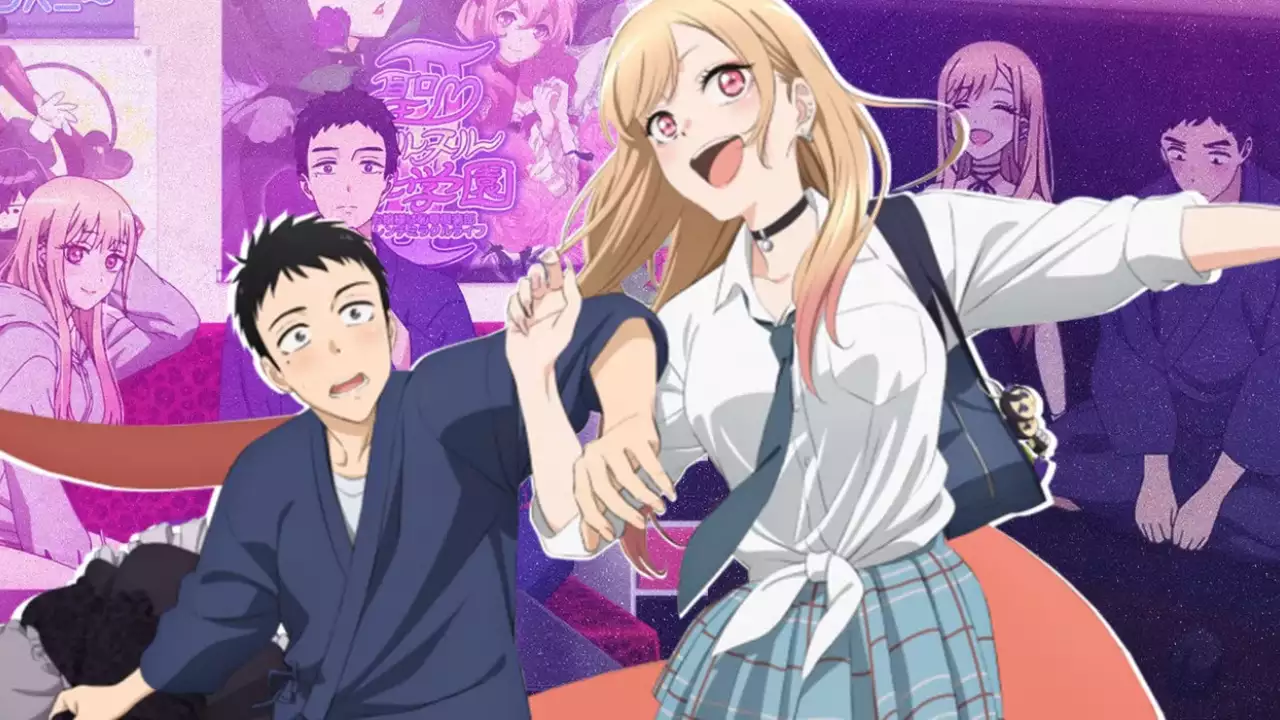
The anime also emphasizes the importance of having a safe space to share one’s interests. Wakana and Marin’s relationship thrives because they support and uplift each other rather than mock or dismiss their passions. This message resonates with many viewers who have felt judged for their hobbies.
While My Dress-Up Darling is often lighthearted, it also touches on relatable struggles. Wakana’s self-doubt, Marin’s desire to improve her craft, and the insecurities of supporting characters create a grounded narrative that goes beyond simple romance. These elements make the anime emotionally engaging while still maintaining its fun and playful tone.

With only one season so far, fans eagerly anticipate a continuation of the story. The manga continues beyond the anime’s ending, promising more heartfelt moments and deeper development between Wakana and Marin. Given the show’s success, a second season is highly anticipated.
My Dress-Up Darling stands out as a refreshing romantic comedy with a unique premise and lovable characters. Its blend of humor, romance, and dedication to cosplay culture creates an enjoyable and meaningful experience. Whether viewers are interested in fashion, anime culture, or simply a wholesome love story, this series offers something for everyone.


